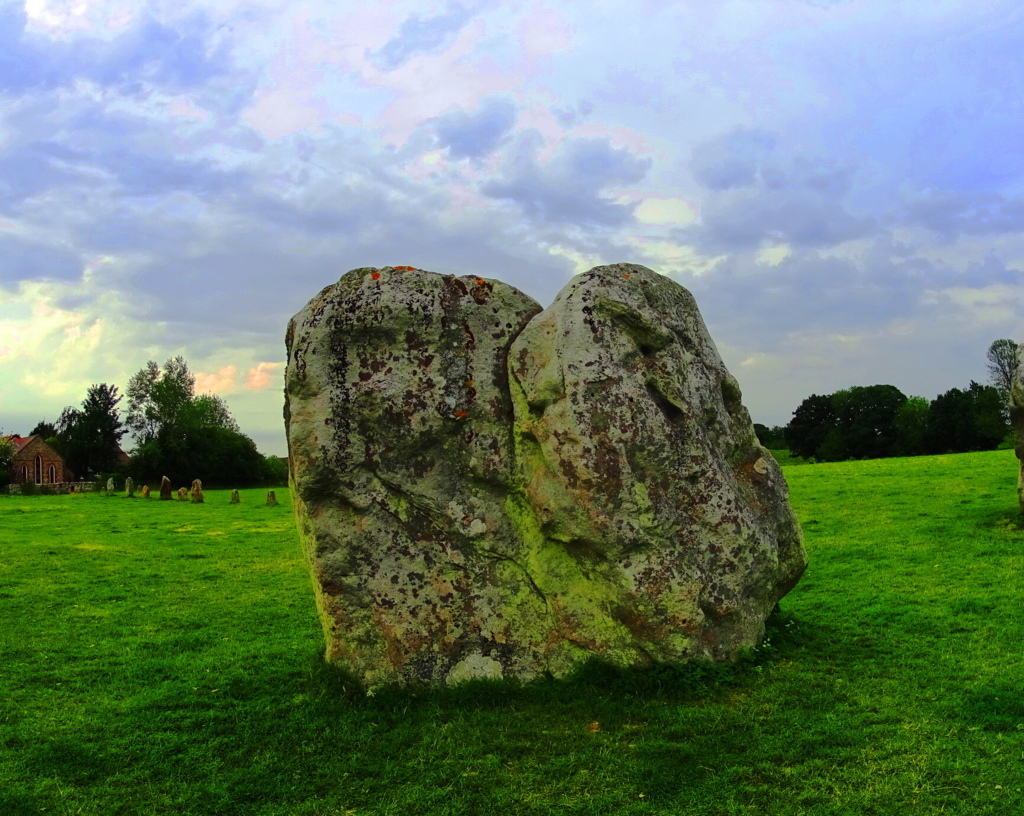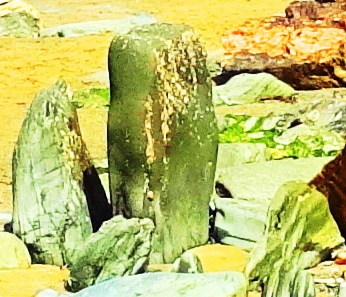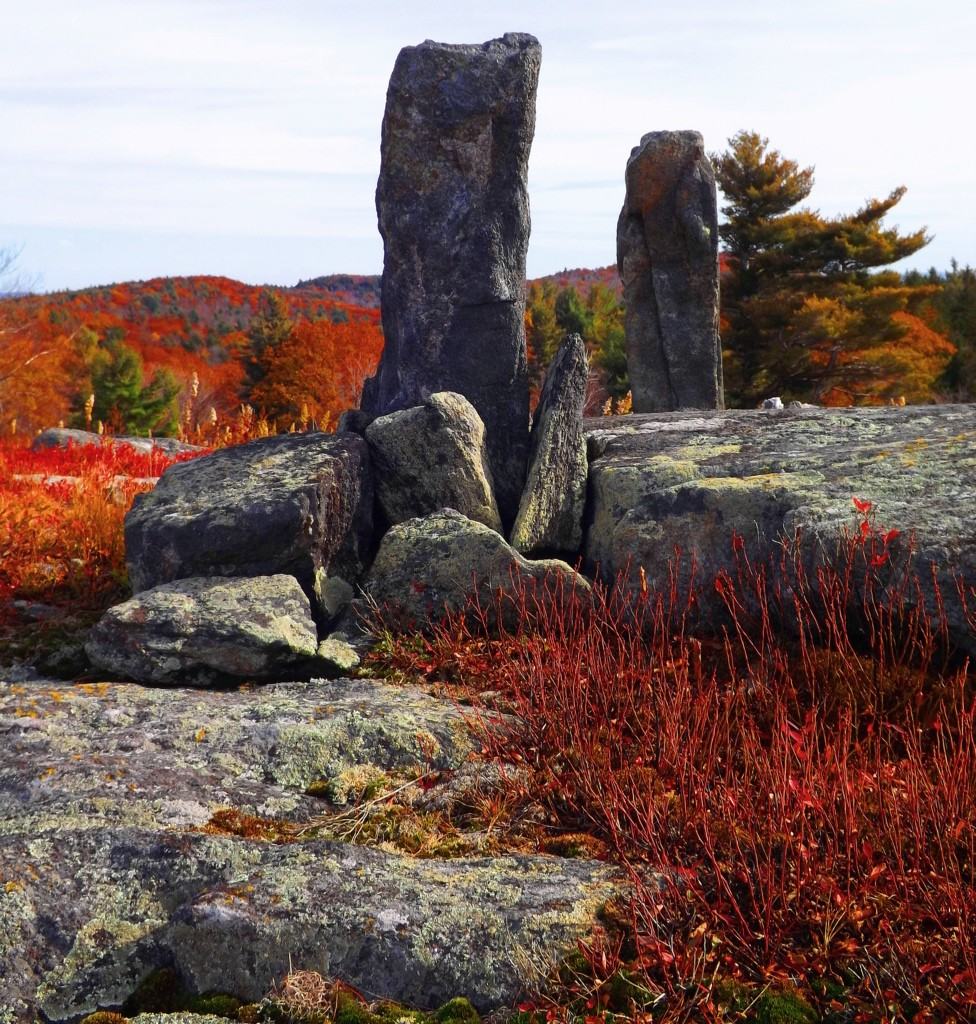Avalon
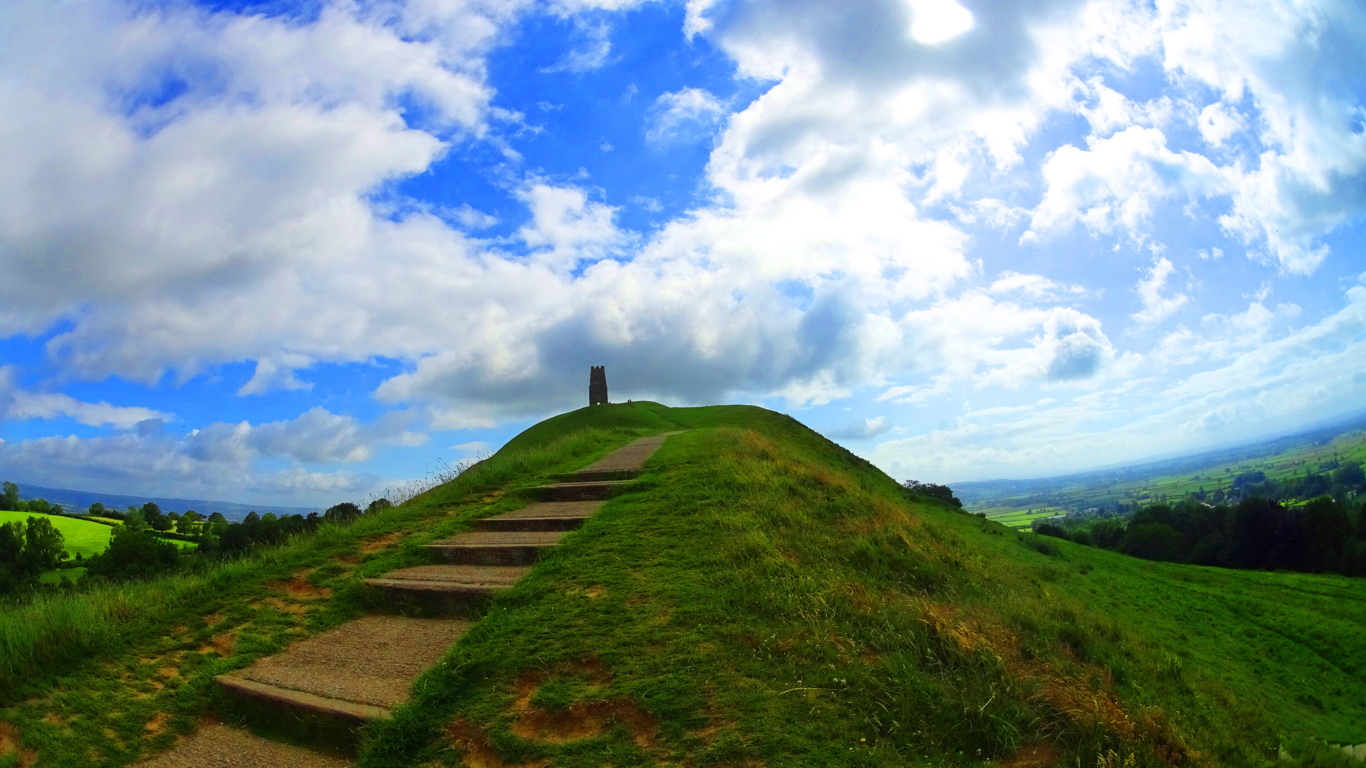
Location: Glastonbury, Somerset/England
Elevation: 518 feet
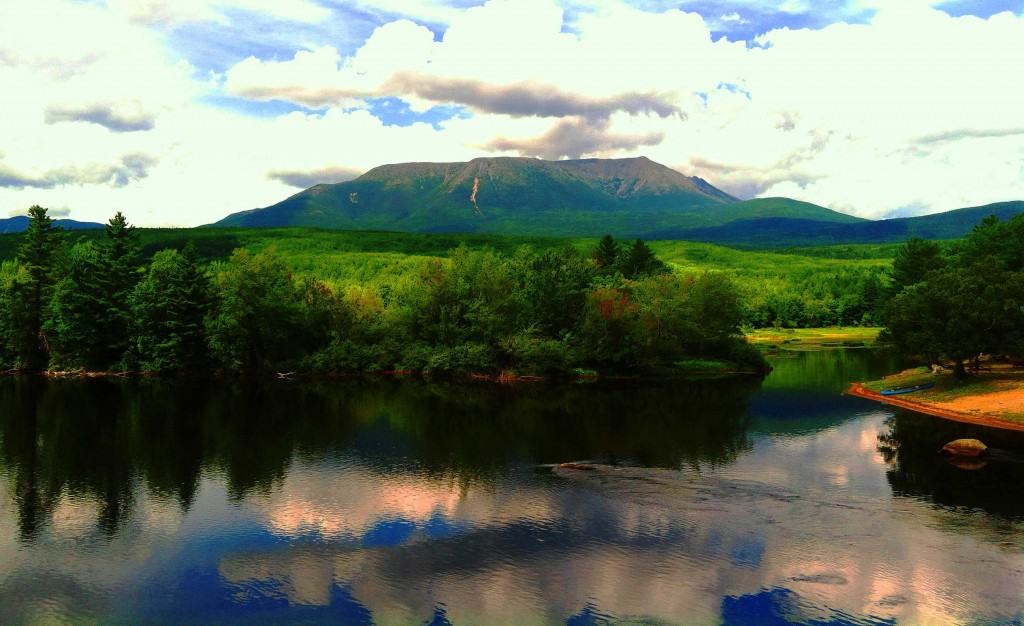
Mount Katahdin
Note: For hiking enthusiasts the experience of moving through a chosen landscape is joyfully justified. The spaces people choose to traverse often reveal something relevant to their personal stories and dreams. I met a woman last Summer in Baxter State Park, Maine, who, after giving me a ride back to camp with her husband in a pick-up-truck from the edge of a gorgeous old-growth forest, pointed straight at Mount Katahdin in the distance and said: “Now there’s the most beautiful view in the whole wide world!”(image/right) And that’s really all it takes; a good story, or an enthusiastic sentiment, and suddenly you’re hooked, and soon you find yourself making your way to a trail full of wonders foretold by others. I hiked to the peak of Katahdin the very next day, and it was truly beautiful. There are few trails that contain more of this type of impetus than Celtic ones. They encompass all the qualities that persuade hikers, with epic natural beauty, and an even more epic mythical history. The place featured in the first image above is not a physically domineering expression, like Mount Katahdin, or Mount Snowdon in Wales, but in terms of legends it is absolutely massive. Any hiker passing through Somerset County in England would be totally remiss if they didn’t stop to take this beautiful short hike to the top of Glastonbury Tor, otherwise known as Avalon. 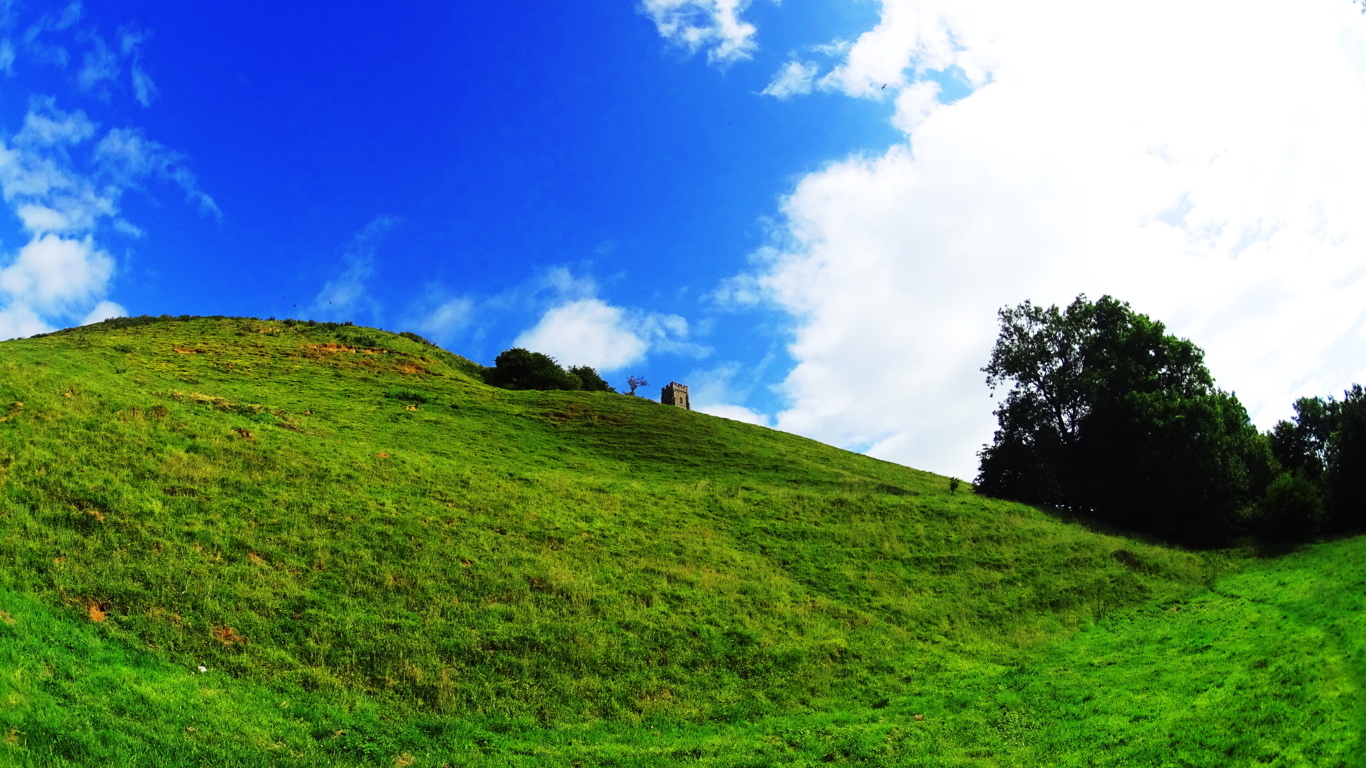
Avalon is the English equivalent of Israel’s Mount Zion. This is a Celtic holy hill which was once a zenith for spiritual practices dating back to the Druids, extending into the Arthurian Legend, and dwindling into the Dark Ages to Medieval times. It is believed that Avalon was once surrounded by water, like many sites in England once were, making it an island. This ecological consideration legitimizes the history of the hill, as scientists do see signs that it was once surrounded by water perhaps 1700 years ago, or more. The brilliant rolling countryside we now see from Avalon, was once a watery stillness that provided protection to its mystics. It remains a brilliant vista to this day.  It is also believed that King Arthur was buried here after his epic battle with Mordred, and was ultimately carried across the water by an angelic vessel, laying Arthur to rest at Avalon until the future merited his prophetic return. The Hill of Tara in Ireland (image/below) has similar stories of sanctified kings that are buried in the pristine hills within its vicinity. These kings will one day return when needed in the late future, according to the legend.
It is also believed that King Arthur was buried here after his epic battle with Mordred, and was ultimately carried across the water by an angelic vessel, laying Arthur to rest at Avalon until the future merited his prophetic return. The Hill of Tara in Ireland (image/below) has similar stories of sanctified kings that are buried in the pristine hills within its vicinity. These kings will one day return when needed in the late future, according to the legend. This lends tangible historical relevance to the Arthur Legend, a connection of the use of grand hillsides for the burials of kings, and prophecies of future return in Ireland. There’s a pattern there, and it must have a source. And this is what anthropologists are attempting to find, sources. How much of these beautiful stories are based in reality is for us to discover. The french poet Thomas Malory is responsible for a great deal of the comprehensive Arthur Legend, which he wrote in the early 1400’s as one of the most concise efforts to consolidate the Celtic folktales of England, Ireland, and France. The word-of-mouth myths that Malory utilized are the real priceless items. These stories were so numerous and similar that it made the myths possible, and it seems likely that there is an origin where the very real figures existed once to inspire the entire culture to embrace these themes. During the Saxon incursion of England after the Roman withdrawal around 400 C.E, a wave of Germanic people came from the continent and swept across south-eastern England. Historians have discovered a specific line about halfway into England, where German burials and cultural objects absolutely stop, and English/Celtic items remain. We can deduce historically that there certainly was a leader who stopped the Saxons dead in their tracks. It would have taken incredible conviction, resources, and sacrifice to blatantly stop an incursion, and interestingly enough there just happens to be a legend of a king who did this precise thing, Arthur. This qualifies Avalon, and the entire Glastonbury area as a sacred place on every possible level.
This lends tangible historical relevance to the Arthur Legend, a connection of the use of grand hillsides for the burials of kings, and prophecies of future return in Ireland. There’s a pattern there, and it must have a source. And this is what anthropologists are attempting to find, sources. How much of these beautiful stories are based in reality is for us to discover. The french poet Thomas Malory is responsible for a great deal of the comprehensive Arthur Legend, which he wrote in the early 1400’s as one of the most concise efforts to consolidate the Celtic folktales of England, Ireland, and France. The word-of-mouth myths that Malory utilized are the real priceless items. These stories were so numerous and similar that it made the myths possible, and it seems likely that there is an origin where the very real figures existed once to inspire the entire culture to embrace these themes. During the Saxon incursion of England after the Roman withdrawal around 400 C.E, a wave of Germanic people came from the continent and swept across south-eastern England. Historians have discovered a specific line about halfway into England, where German burials and cultural objects absolutely stop, and English/Celtic items remain. We can deduce historically that there certainly was a leader who stopped the Saxons dead in their tracks. It would have taken incredible conviction, resources, and sacrifice to blatantly stop an incursion, and interestingly enough there just happens to be a legend of a king who did this precise thing, Arthur. This qualifies Avalon, and the entire Glastonbury area as a sacred place on every possible level.
Trail: There are a few approaches to the minor peak of 518 feet. You can start from the entrance way coming from the Glastonbury side, at Wellhouse Lane. Simply cross the street and pass the gate to head up the hill. This is near ‘Chalice Well’, a holy site related to the overall scene.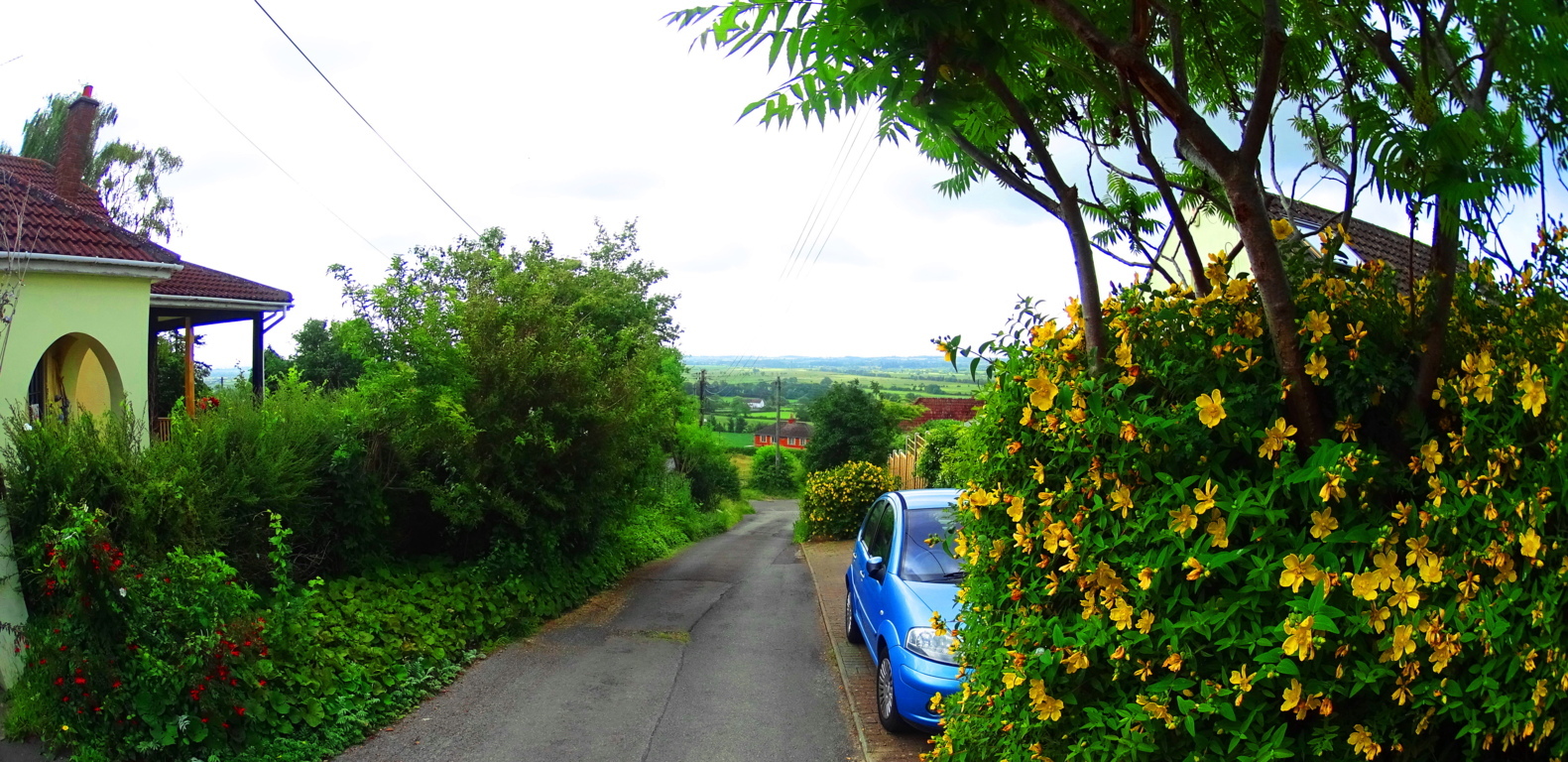
A secondary, less ‘touristy’ approach, is to the south-east at the end of Ashwell Lane (above image), where there are countryside homes, horses, and ponies grazing in the fields.  You can park your car on the side of the road and take the hedge covered path to the second gate.
You can park your car on the side of the road and take the hedge covered path to the second gate.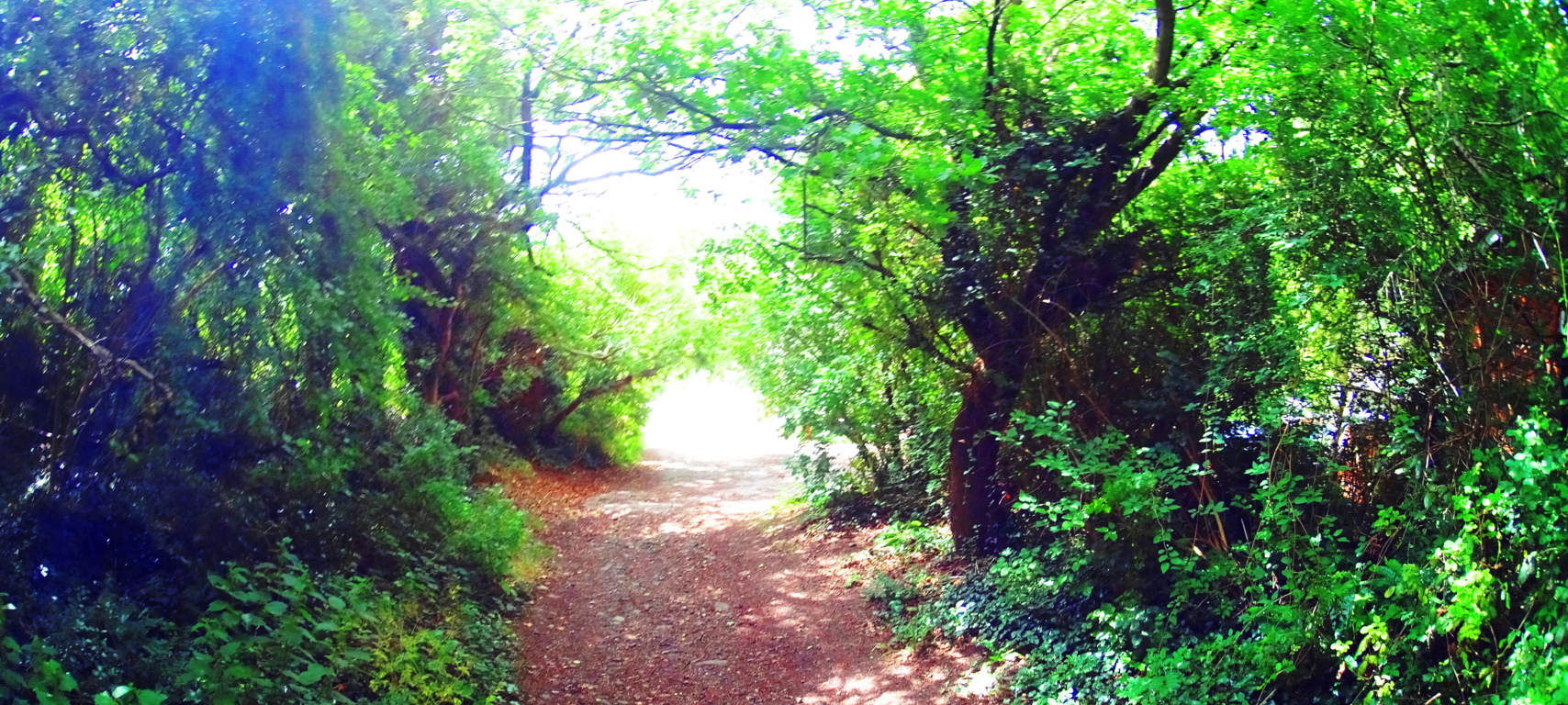 It is at the Ashwell Gate that you pick-up the trail and get your first glimpse of this massive hillside. There is something about it that doesn’t seem natural, as if it is layered beneath by massive ridges which can be seen with the naked eye from a distance. Anthropologists believe that a Celtic hill-fort most certainly rests beneath the surface, among other things. The incline is about 60 degrees, making the approach of any enemies in ancient times almost futile. The hill also glows with a particular type of moss that the oldest sites seem to sponsor throughout the Celtic world.
It is at the Ashwell Gate that you pick-up the trail and get your first glimpse of this massive hillside. There is something about it that doesn’t seem natural, as if it is layered beneath by massive ridges which can be seen with the naked eye from a distance. Anthropologists believe that a Celtic hill-fort most certainly rests beneath the surface, among other things. The incline is about 60 degrees, making the approach of any enemies in ancient times almost futile. The hill also glows with a particular type of moss that the oldest sites seem to sponsor throughout the Celtic world. 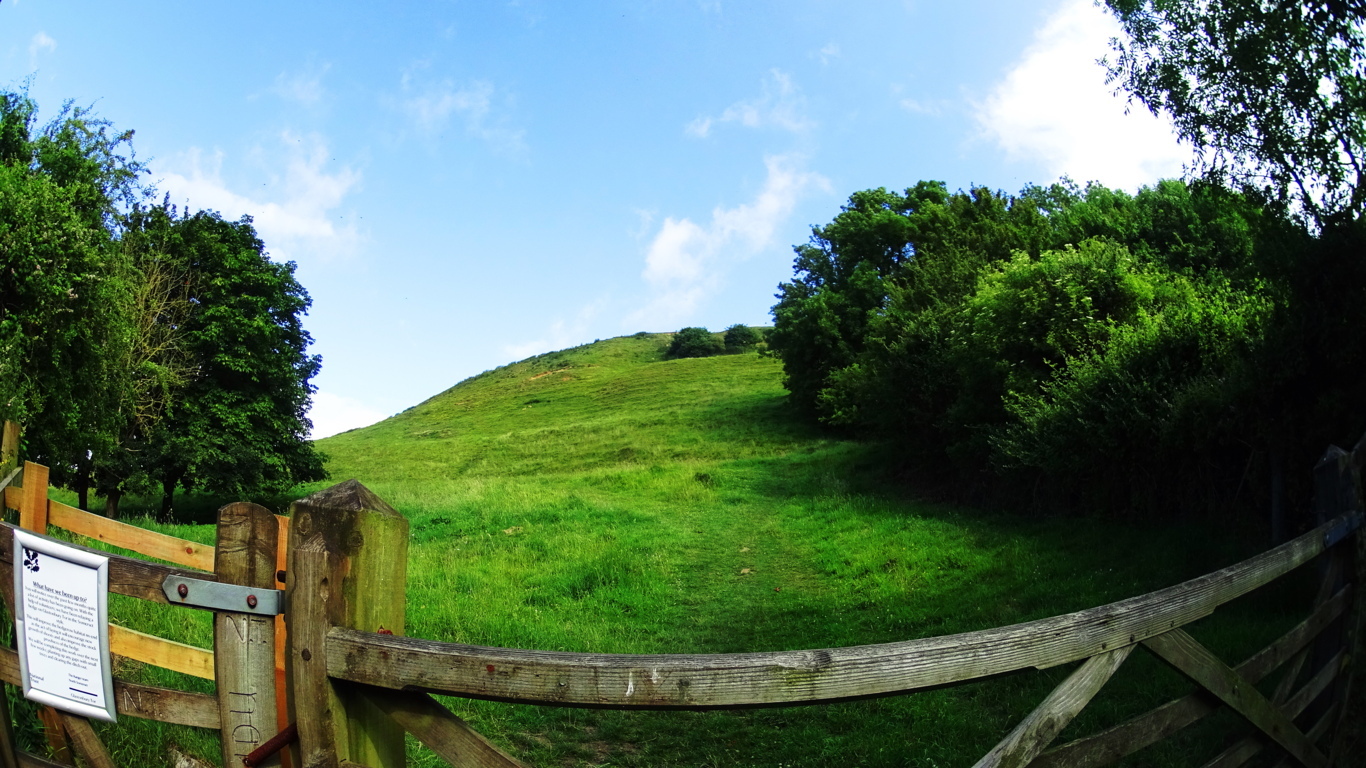 Follow the trail to the south westerly lane that climbs around towards St. Michael’s Tower at the peak. While climbing you may see people invoking Celtic ‘energies’ in the Tower, lifting their arms in praise of the Cardinal Directions and energy-lines, better known as ‘ley lines’, on which Avalon sits.
Follow the trail to the south westerly lane that climbs around towards St. Michael’s Tower at the peak. While climbing you may see people invoking Celtic ‘energies’ in the Tower, lifting their arms in praise of the Cardinal Directions and energy-lines, better known as ‘ley lines’, on which Avalon sits.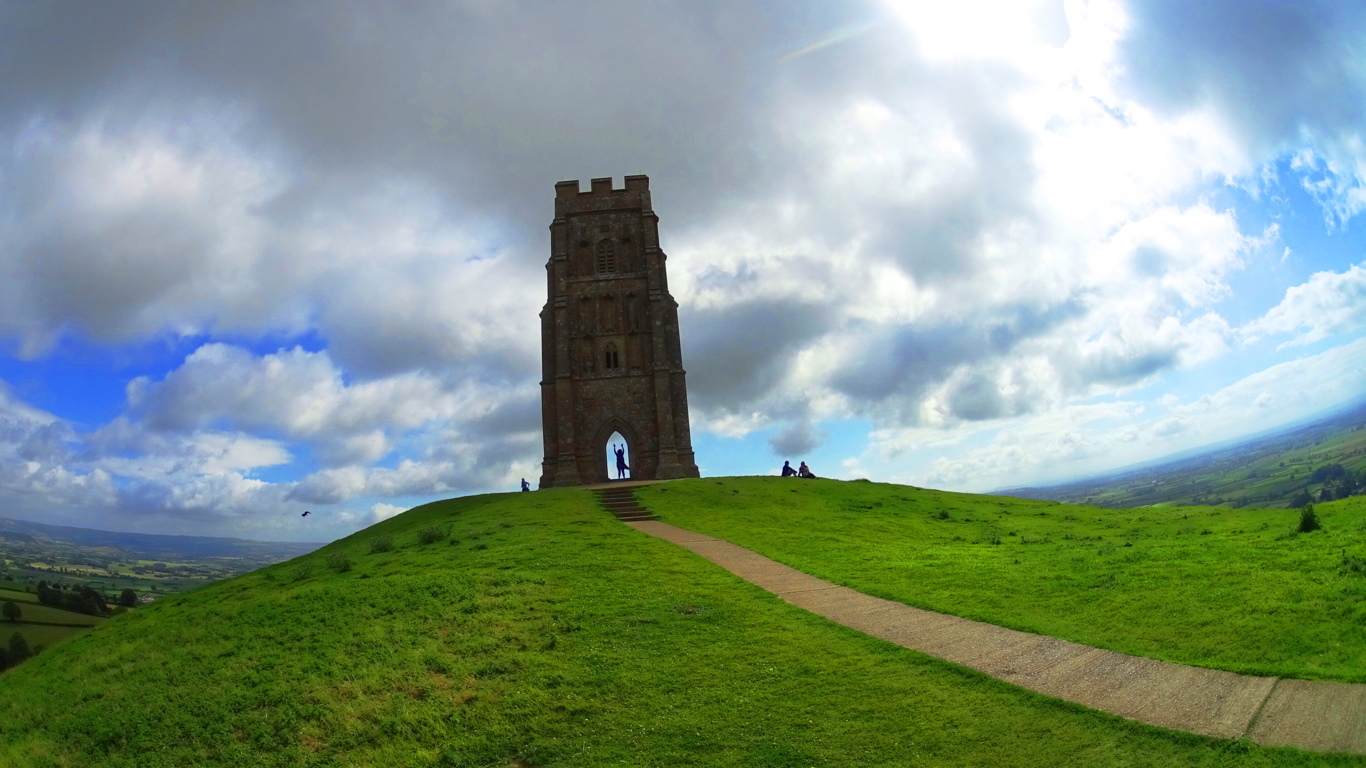 As you climb you will feel that there is certainly something strange going on beneath your feet. It’s like walking on a giant earthen drum. If you stomp the soil in certain places a hollow reverberation can be felt. This is the mysterious feeling that you can only experience actually hiking here, not looking at images. The point is to try to get there. After hiking about 400 feet up a finely crafted pathway, you can look back at the beautiful medieval village of Glastonbury.
As you climb you will feel that there is certainly something strange going on beneath your feet. It’s like walking on a giant earthen drum. If you stomp the soil in certain places a hollow reverberation can be felt. This is the mysterious feeling that you can only experience actually hiking here, not looking at images. The point is to try to get there. After hiking about 400 feet up a finely crafted pathway, you can look back at the beautiful medieval village of Glastonbury. The hills in the distance are like glowing pastures in the clouds, giving us a glimpse of the security the ancients must have felt from the top of this amazing ‘Tor’.
The hills in the distance are like glowing pastures in the clouds, giving us a glimpse of the security the ancients must have felt from the top of this amazing ‘Tor’.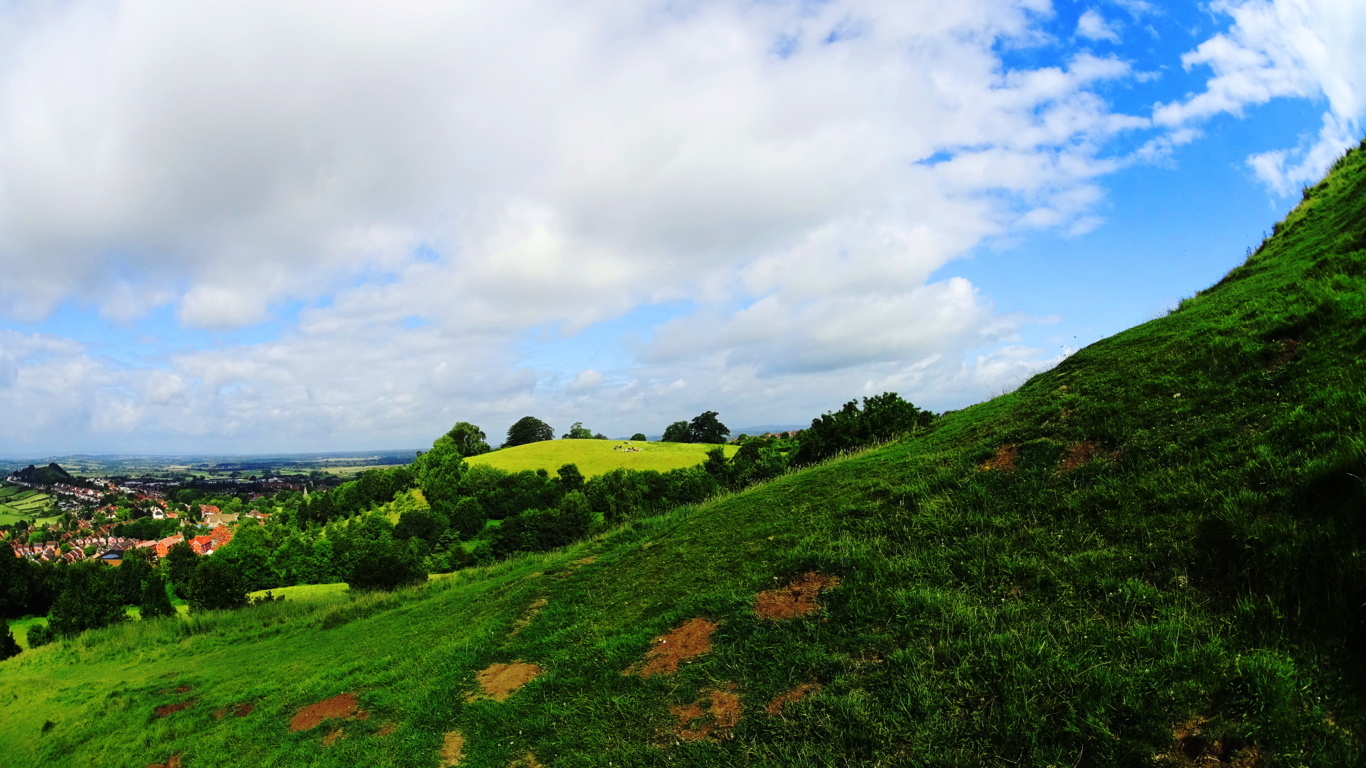 At the top is St. Michael’s Tower, which stands like a stone-antenna sponsoring a 360 degree view of England. There is a specific spot where it is believed the energy of all the directions culminate. It is marked with a circular-stone-step where you can stand and appreciate the moment.
At the top is St. Michael’s Tower, which stands like a stone-antenna sponsoring a 360 degree view of England. There is a specific spot where it is believed the energy of all the directions culminate. It is marked with a circular-stone-step where you can stand and appreciate the moment.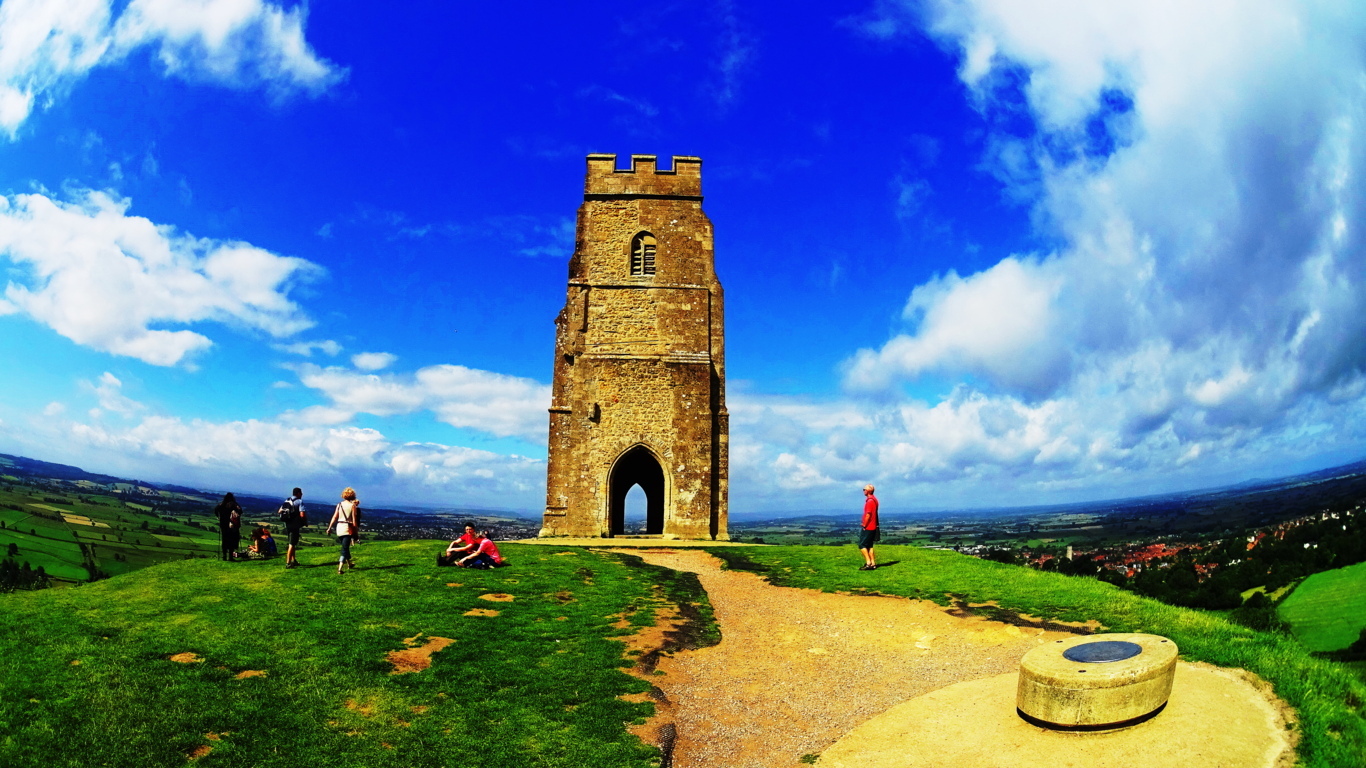 This is certainly a place to just plop down, relax, and wonder. The southerly view looking back on Glastonbury from St. Michael’s Tower is nothing less than a ‘storybook’ vision.
This is certainly a place to just plop down, relax, and wonder. The southerly view looking back on Glastonbury from St. Michael’s Tower is nothing less than a ‘storybook’ vision. 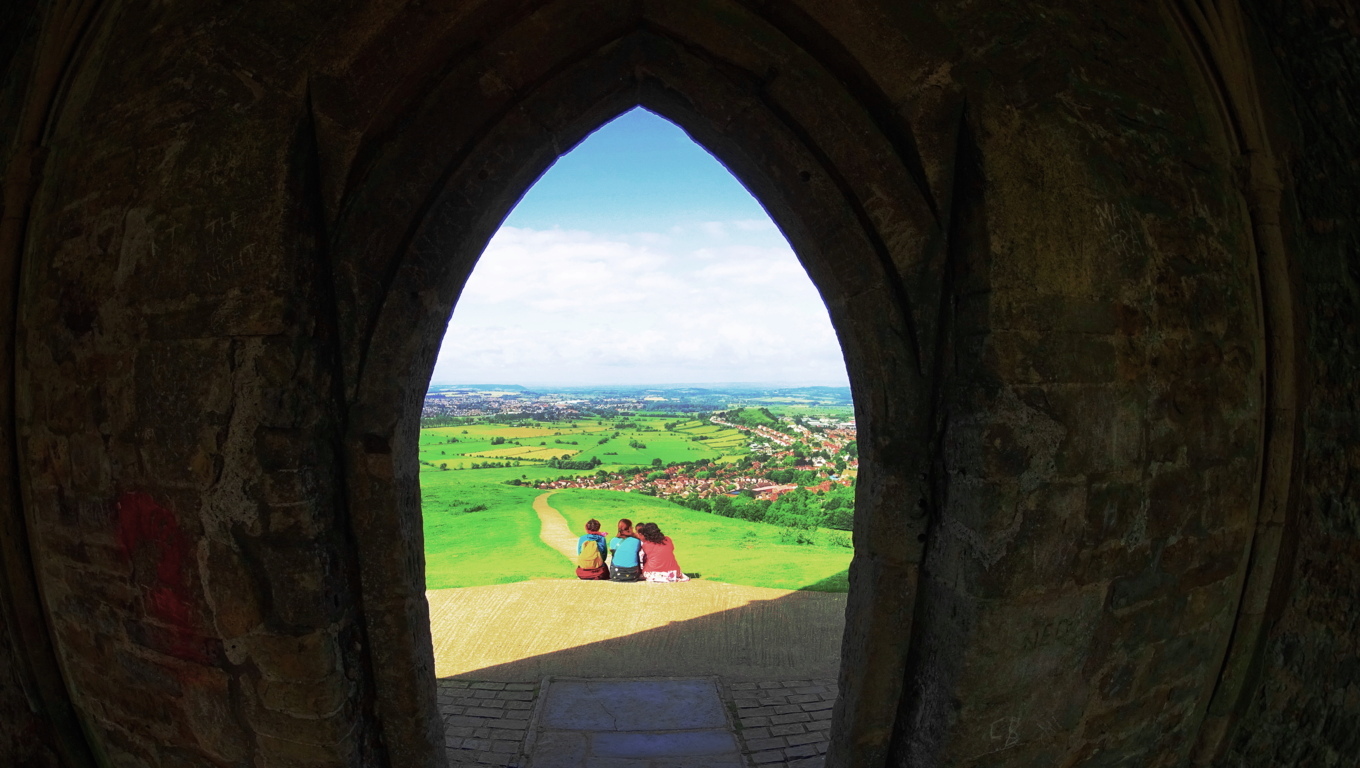 It can only enhance a hikers experience and appreciation to reach the short peak at Avalon, otherwise known as Glastonbury Tor. Glastonbury Abbey is in the distance below, which is a venerable cultural center with historic substance all its own, intrinsically related to Avalon. This is a different type of adventure for a ‘veteran hiker’. Here the goal is to accomplish a greater appreciation for the landscape itself, to feel a historic precipice, to absorb the energy of a protected sacred place. If you ingest this feeling you may very well develop a type of ‘sixth sense’ that you can recall at need in the forests and mountains of other places, and perhaps discover something sacred on your own. Avalon is literally part of the essence of everything “Once upon a Time”, and what could be better to seek and find.
It can only enhance a hikers experience and appreciation to reach the short peak at Avalon, otherwise known as Glastonbury Tor. Glastonbury Abbey is in the distance below, which is a venerable cultural center with historic substance all its own, intrinsically related to Avalon. This is a different type of adventure for a ‘veteran hiker’. Here the goal is to accomplish a greater appreciation for the landscape itself, to feel a historic precipice, to absorb the energy of a protected sacred place. If you ingest this feeling you may very well develop a type of ‘sixth sense’ that you can recall at need in the forests and mountains of other places, and perhaps discover something sacred on your own. Avalon is literally part of the essence of everything “Once upon a Time”, and what could be better to seek and find.
Avebury Stone Circle
Note: The broad and beautiful rolling hills southwest of London is home to some of the most mysterious wonders in the world. This designated area has a rather unassuming name, considering the undeniable mysteries it contains, known simply as ‘Wiltshire’. It could be called something more relevant, like “Temple-haven”, or “God-stone-shire”, but the humble title remains. The district of Wiltshire is basically a 50-by-50-mile zone extending from the cities of Ashton Keynes at the northern edge, down to Salisbury in the south, not far from England’s gorgeous southern coast. During the dry season in England, which is late summer, this area is host to campers, hikers, bikers, and anthropologists. Teams of hikers can be found attempting expeditions from the southern tip of nearby Cornwall, north to Snowdon Range in Wales, all the way up to Glencoe Scotland. Many of these outdoor enthusiasts begin here, in Wiltshire. The Wiltshire hills and fields feel at least four to five times more broad then in Ireland, Scotland, or New England. In antiquity England was known as Albion, which means: “Land of Giants”, and on this wide open Celtic plain, the title seems appropriate.
The district of Wiltshire is basically a 50-by-50-mile zone extending from the cities of Ashton Keynes at the northern edge, down to Salisbury in the south, not far from England’s gorgeous southern coast. During the dry season in England, which is late summer, this area is host to campers, hikers, bikers, and anthropologists. Teams of hikers can be found attempting expeditions from the southern tip of nearby Cornwall, north to Snowdon Range in Wales, all the way up to Glencoe Scotland. Many of these outdoor enthusiasts begin here, in Wiltshire. The Wiltshire hills and fields feel at least four to five times more broad then in Ireland, Scotland, or New England. In antiquity England was known as Albion, which means: “Land of Giants”, and on this wide open Celtic plain, the title seems appropriate.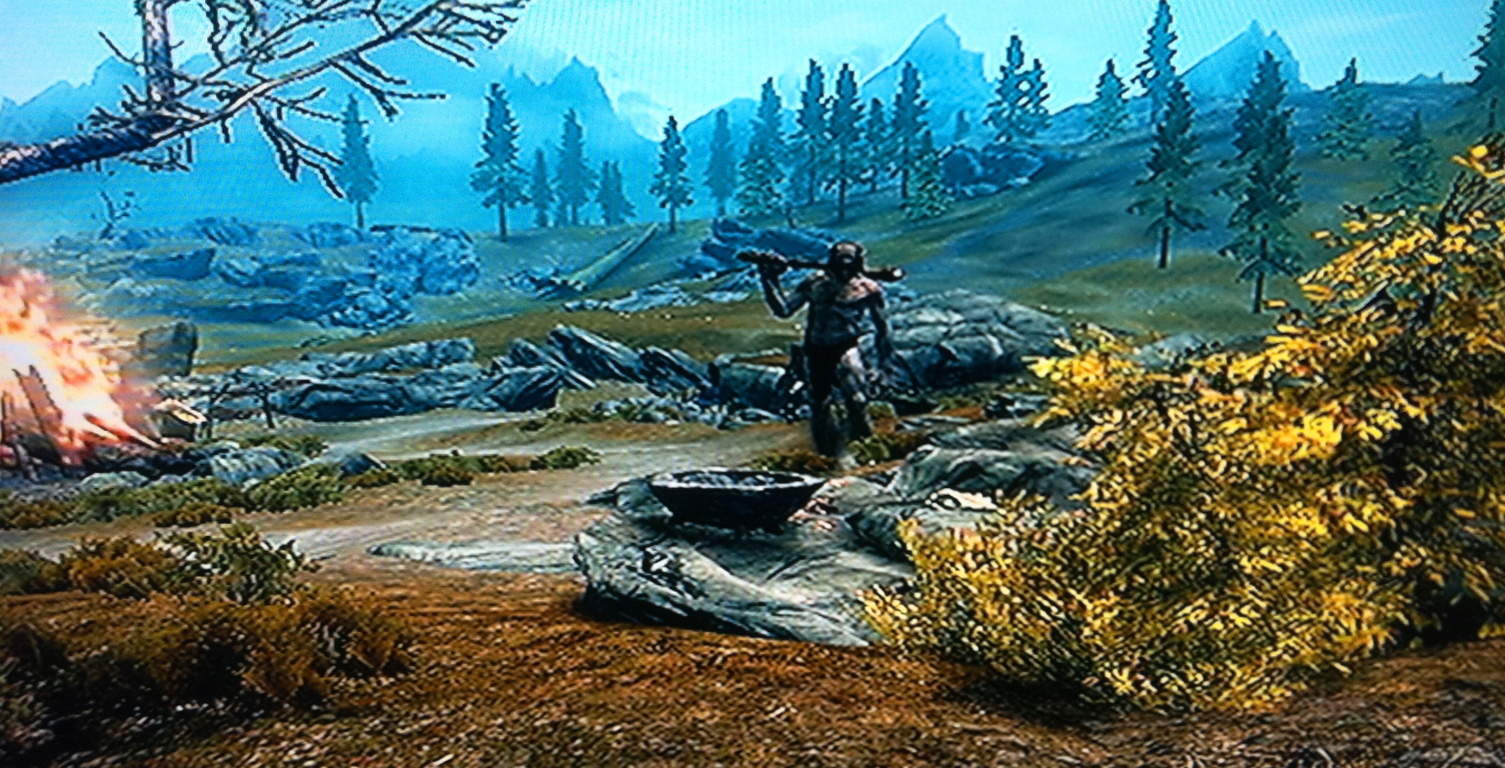 It becomes easy to imagine giants roaming across these fields, tending flocks, roasting lamb over great bonfires, and watching the stars in the fair season, very much like they are depicted in the Celtic Xbox game, Skyrim.
It becomes easy to imagine giants roaming across these fields, tending flocks, roasting lamb over great bonfires, and watching the stars in the fair season, very much like they are depicted in the Celtic Xbox game, Skyrim.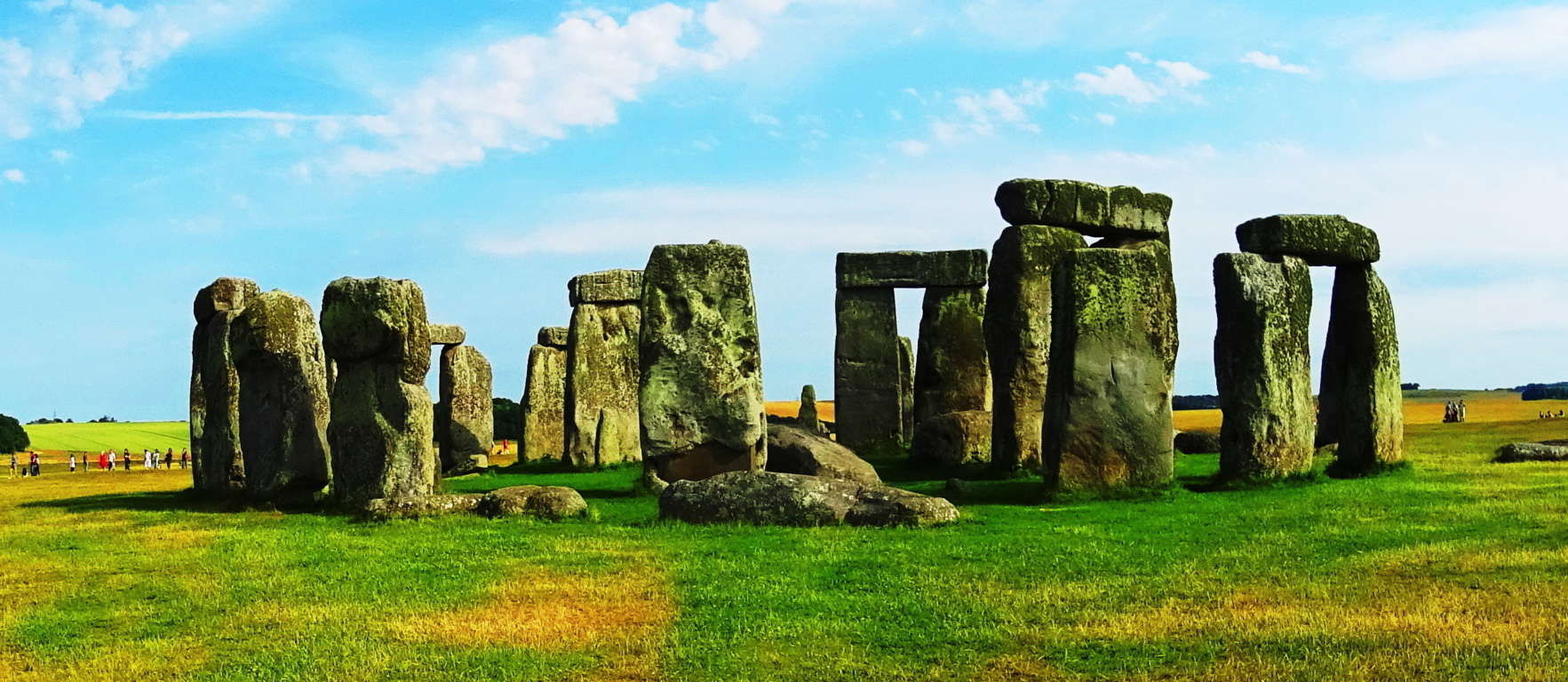 This is an extremely picturesque open space, with hedges, crops, and surviving ancient old-growth trees standing stoically against a universe of looming green fields. The fascinating, and world renown Stonehenge, is within the boarders of Wiltshire, receiving international visitors numbering into the thousands every year. However, an equally incredible and mysterious megalithic place exists just 20 miles south of Stonehenge, a place which most people don’t seem to know about, that place being Avebury Stone Circle. Avebury is nothing less than the largest stone circle on earth.
This is an extremely picturesque open space, with hedges, crops, and surviving ancient old-growth trees standing stoically against a universe of looming green fields. The fascinating, and world renown Stonehenge, is within the boarders of Wiltshire, receiving international visitors numbering into the thousands every year. However, an equally incredible and mysterious megalithic place exists just 20 miles south of Stonehenge, a place which most people don’t seem to know about, that place being Avebury Stone Circle. Avebury is nothing less than the largest stone circle on earth.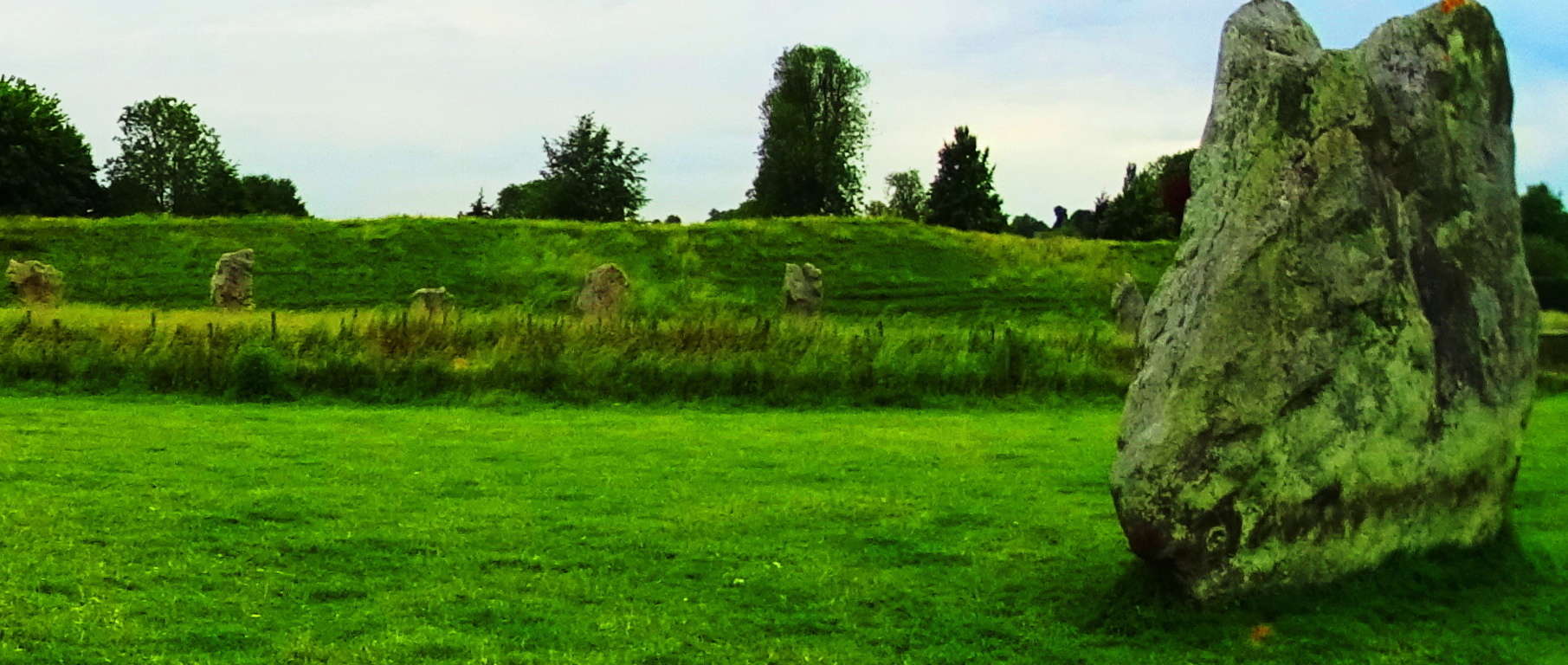 Not only is the radius of the outer circle about a mile long, but the 98 Sarsen stones that make this circle are without a doubt the largest possible standing stones that could’ve been placed here.
Not only is the radius of the outer circle about a mile long, but the 98 Sarsen stones that make this circle are without a doubt the largest possible standing stones that could’ve been placed here. Each stone is, at a minimum, 12 feet tall, by 3 feet in width, and some are larger. These standing stones range from 50 to 60 tons each. It’s boarding on impossible. That’s roughly 12 MILLION pounds of stone in one place. Here are some examples of perhaps the largest standing stones on earth below…
Each stone is, at a minimum, 12 feet tall, by 3 feet in width, and some are larger. These standing stones range from 50 to 60 tons each. It’s boarding on impossible. That’s roughly 12 MILLION pounds of stone in one place. Here are some examples of perhaps the largest standing stones on earth below…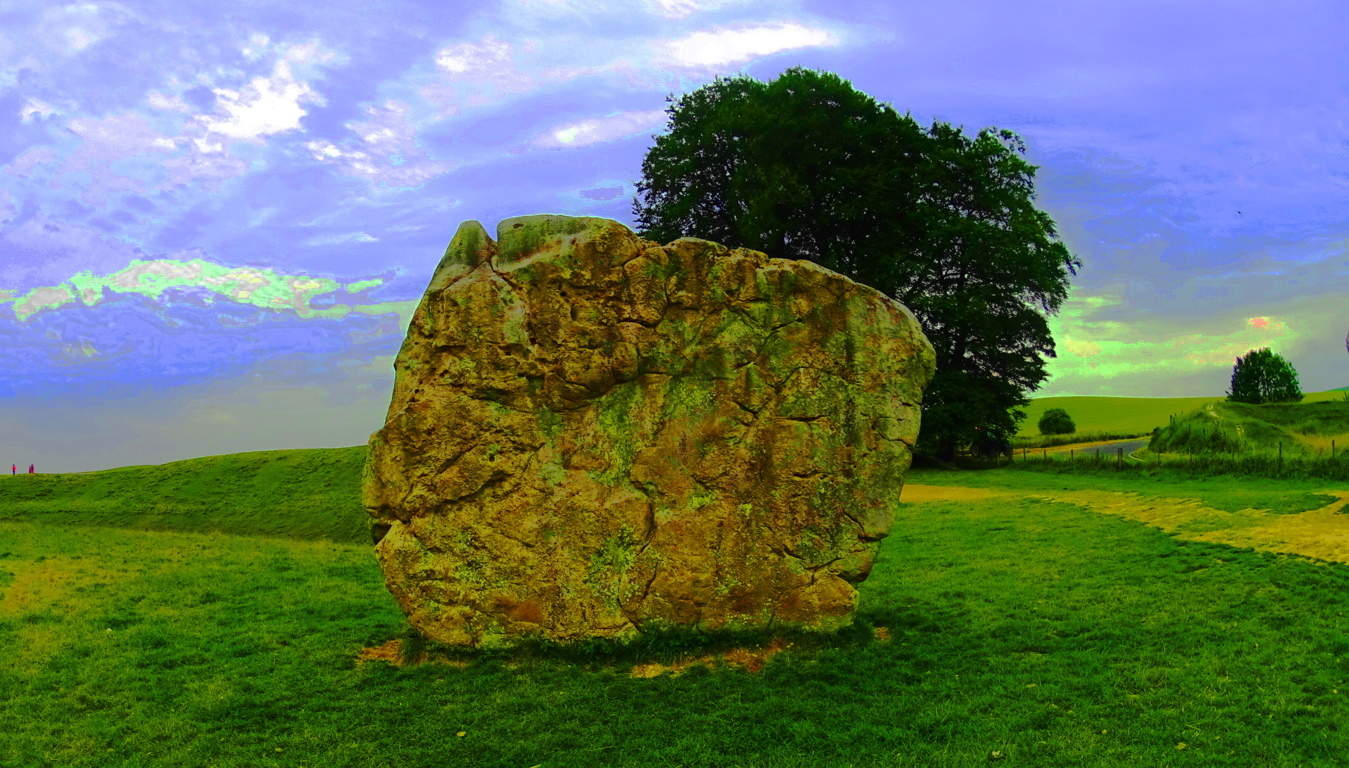 There are also two smaller inner stone circles within the overall ring, with more customary stones that are about 6 feet high and 2 foot in width, but several of those stones are now missing. Altogether, this is a grandly concentric scene, with circles within circles of impossibly placed stones, like interwoven gears in a Jurassic size clock.
There are also two smaller inner stone circles within the overall ring, with more customary stones that are about 6 feet high and 2 foot in width, but several of those stones are now missing. Altogether, this is a grandly concentric scene, with circles within circles of impossibly placed stones, like interwoven gears in a Jurassic size clock.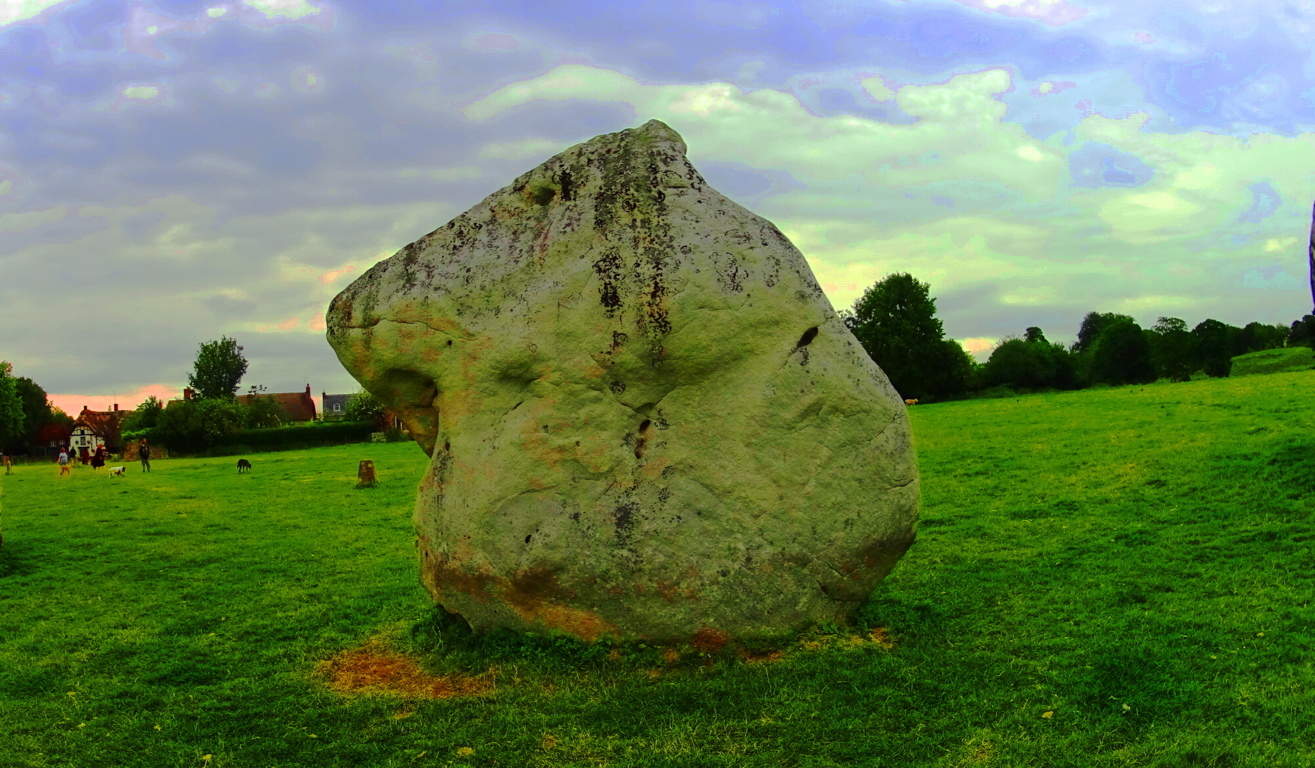 A hike within these rings is a dreamlike experience. Each stone has an absolutely distinct character and individuality, unlike the sarsens at Stonehenge, which are uniform in character, most likely indicating a different meaning. Each standing stone is a type of unique masterpiece, an essay on individuality. If you study standing stones enough, it is hard not to look at people the same way, with subtle nuances and individual markings that make them unique and amazing. Incredibly, standing stones convey many such meanings like this, without a single etched word anywhere. It is simply the nature of the statement itself, the stone as an expression, that draws out our faculties to find the meaning. It would indicate that whoever put these standing stones here was, at minimum, aware of the meanings they would convey forever after. And yet there is so much mystery.
A hike within these rings is a dreamlike experience. Each stone has an absolutely distinct character and individuality, unlike the sarsens at Stonehenge, which are uniform in character, most likely indicating a different meaning. Each standing stone is a type of unique masterpiece, an essay on individuality. If you study standing stones enough, it is hard not to look at people the same way, with subtle nuances and individual markings that make them unique and amazing. Incredibly, standing stones convey many such meanings like this, without a single etched word anywhere. It is simply the nature of the statement itself, the stone as an expression, that draws out our faculties to find the meaning. It would indicate that whoever put these standing stones here was, at minimum, aware of the meanings they would convey forever after. And yet there is so much mystery.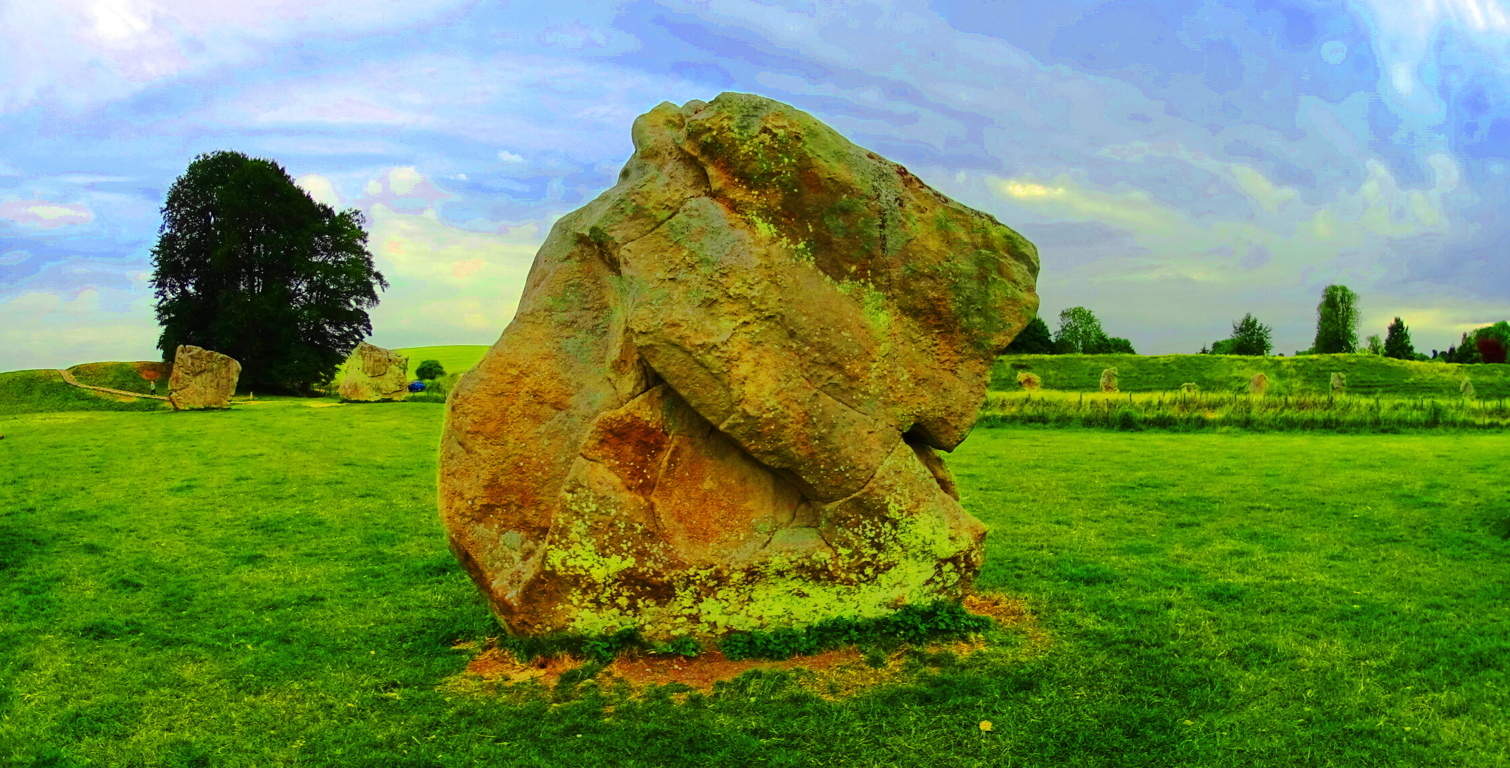 It would seem clear that each stone was chosen specifically for its attributes at Avebury. It becomes impossible not to wonder how these stones came to be here, and why each was chosen.
It would seem clear that each stone was chosen specifically for its attributes at Avebury. It becomes impossible not to wonder how these stones came to be here, and why each was chosen.
The amount of work that it would’ve required to move 12 million pounds of stone in the Neolithic period is incomprehensible. The undertaking would’ve cost hundreds, perhaps thousands of lives, and for several reasons. Neolithic England was a place of Celtic tribal hunter-gatherers, and these tribes would’ve guarded their territories against any trespassers or invaders with deadly force. Moving 98, sixty-ton stones, slowly across a hostilely protected landscape (perhaps with wooden rolling logs and ropes) seems totally illogical.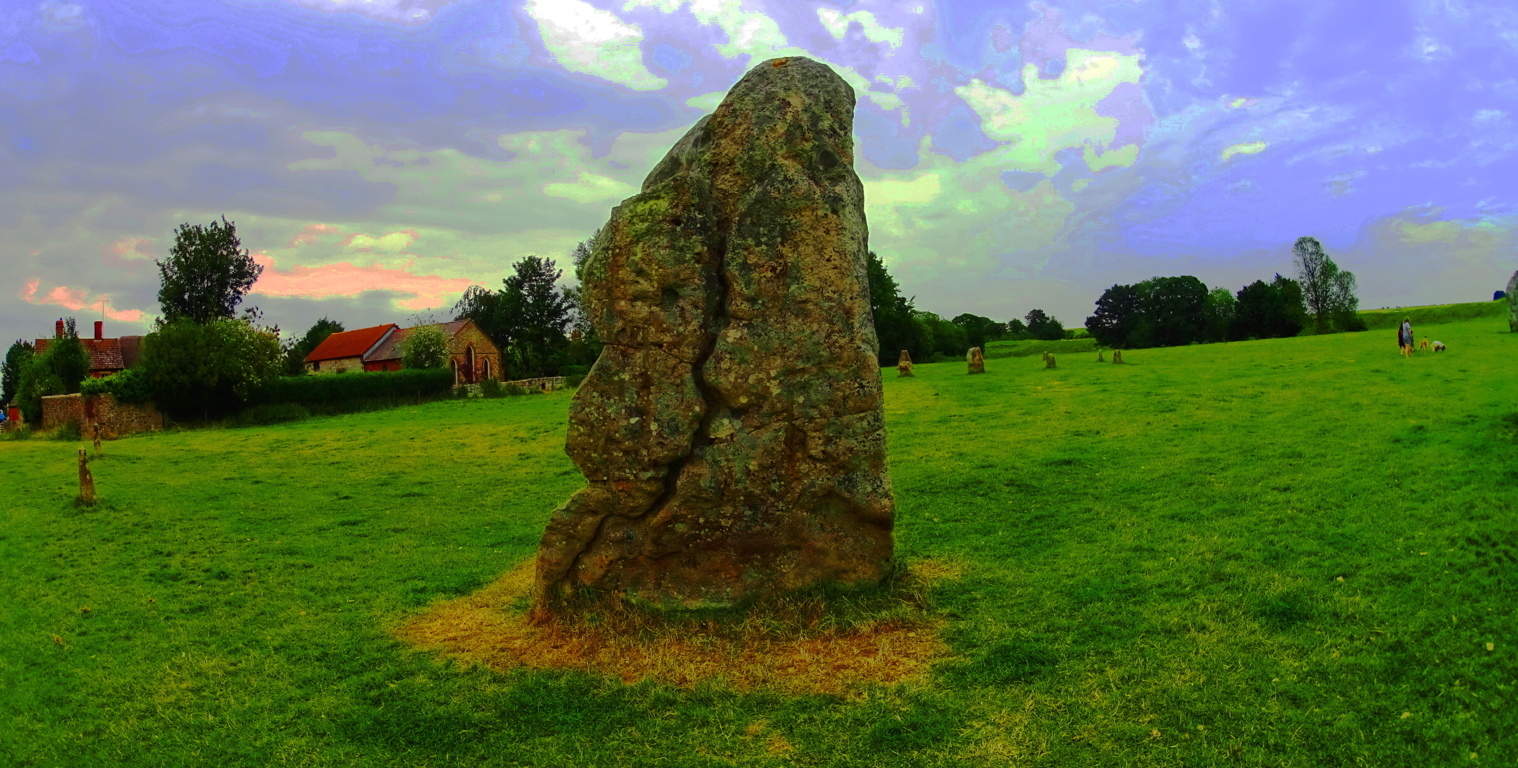 And how many miles have the stones been moved from wherever they came from? This is 12 million pounds of stone we’re taking about, so it presumably makes sense that this effort took several generations, and all of this effort just to create something for which the function is not entirely known? Pretty crazy.
And how many miles have the stones been moved from wherever they came from? This is 12 million pounds of stone we’re taking about, so it presumably makes sense that this effort took several generations, and all of this effort just to create something for which the function is not entirely known? Pretty crazy.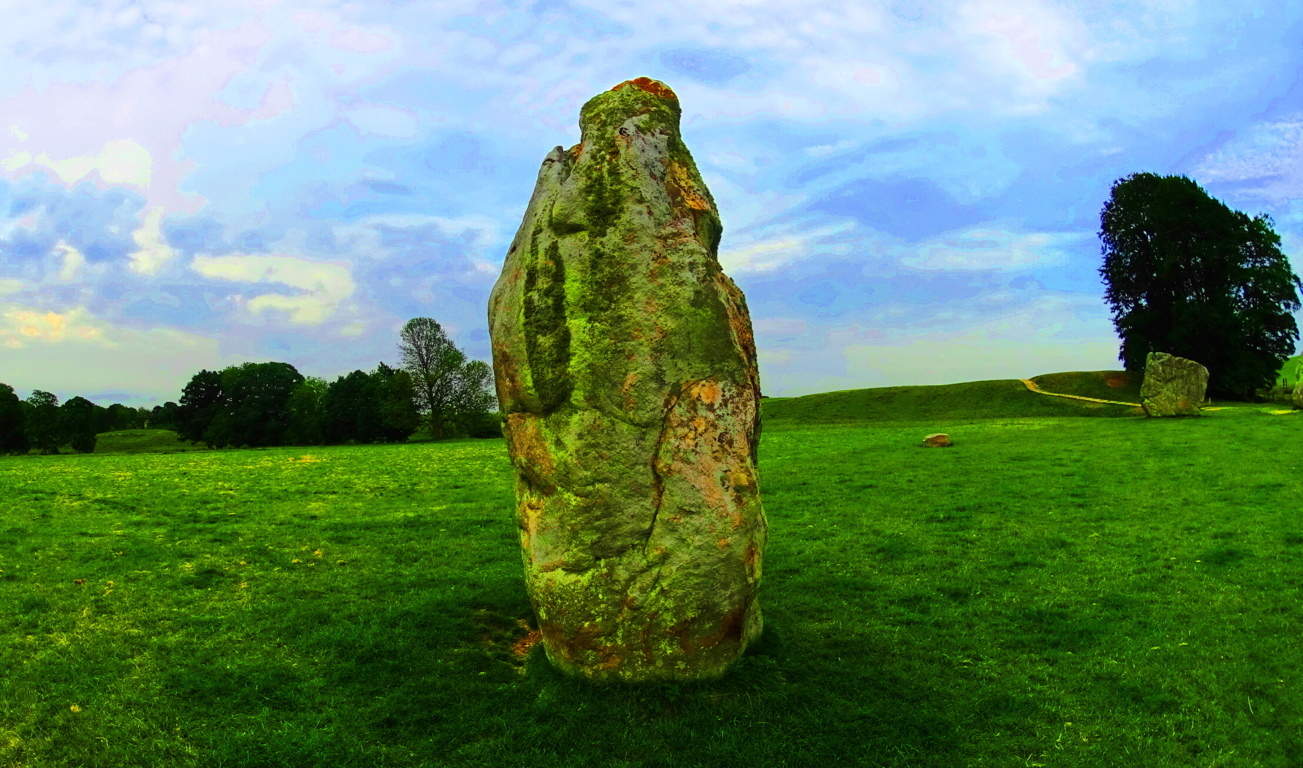 Interestingly enough, if you place your hand on these stones for more than a minute, you can literally feel some kind of charge moving through them. With all the mystery surrounding this place, you could hardly be surprised.
Interestingly enough, if you place your hand on these stones for more than a minute, you can literally feel some kind of charge moving through them. With all the mystery surrounding this place, you could hardly be surprised.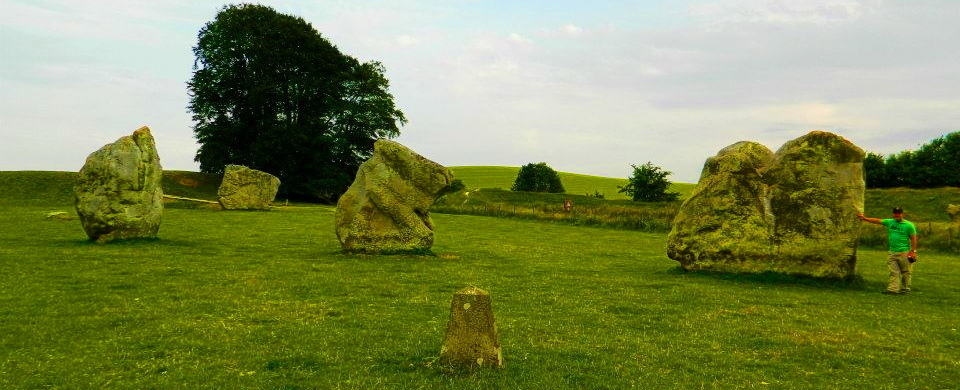 Avebury is obviously a Celtic spiritual center, and one of the most important in the world. The history here goes back to the very beginning of recorded time.
Avebury is obviously a Celtic spiritual center, and one of the most important in the world. The history here goes back to the very beginning of recorded time.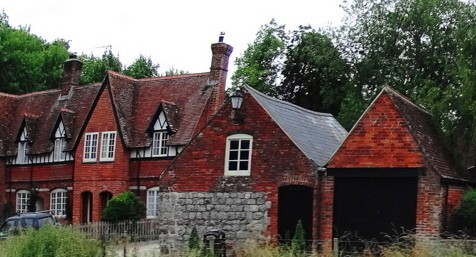 Druids and Celtic peoples would’ve come here to perform their sacred rites. The classic medieval Tudors in the backdrop behind these ancient stones display a middle age period alive and well in the present day. It is understandable that an author like J.R.R Tolkien so adeptly created his amazing novel not far from here in Oxford, weaving very human themes into mysterious magical memes so seamlessly, influenced by places like this for certain. Avebury is a living crossroads for all of these themes. The exact significance of the placement of these stones is not known. Like so many megalithic sites, it may well be that there are astrological/historical connections that we have yet to understand. I believe that the actual truth about who built this place, and why, is still unknown, and suppressed. If you ever get to Avebury, put your hand on one of the megaliths for two minutes, you will understand, from the subtle but significant charge that runs up your arm, that something more is going on at megalithic sites than just “big rocks in the grass”. I hope you make it there soon. Find your way.
Druids and Celtic peoples would’ve come here to perform their sacred rites. The classic medieval Tudors in the backdrop behind these ancient stones display a middle age period alive and well in the present day. It is understandable that an author like J.R.R Tolkien so adeptly created his amazing novel not far from here in Oxford, weaving very human themes into mysterious magical memes so seamlessly, influenced by places like this for certain. Avebury is a living crossroads for all of these themes. The exact significance of the placement of these stones is not known. Like so many megalithic sites, it may well be that there are astrological/historical connections that we have yet to understand. I believe that the actual truth about who built this place, and why, is still unknown, and suppressed. If you ever get to Avebury, put your hand on one of the megaliths for two minutes, you will understand, from the subtle but significant charge that runs up your arm, that something more is going on at megalithic sites than just “big rocks in the grass”. I hope you make it there soon. Find your way.
Tintagel
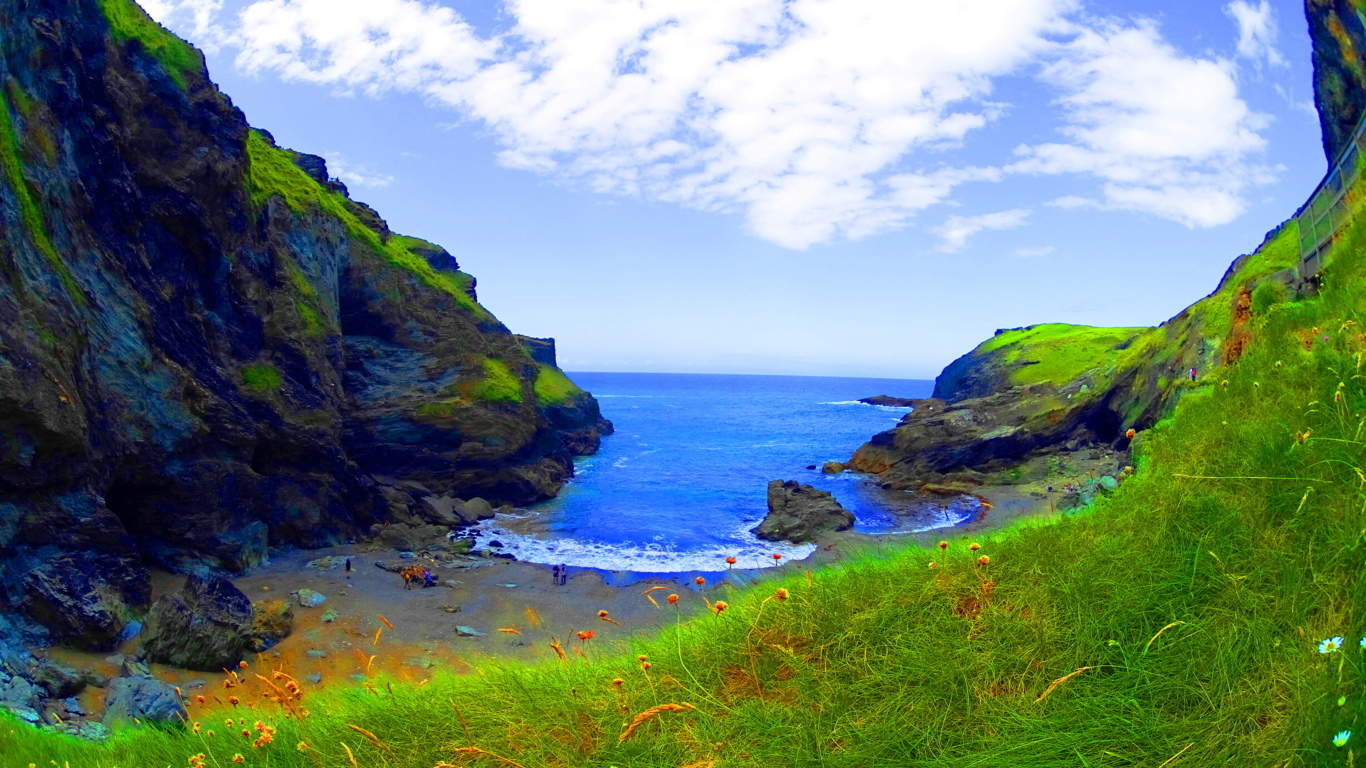 Location: Cornwall Coast, England
Location: Cornwall Coast, England
Note: There are trails that can take you to Standing-Stones sitting on the tops of distant valleys in places like Wales Scotland, and Ireland. There are Dolmens and Wedge Tombs in secret hedges along river paths, hard to find, on misty rocky plateaus in regions where roads have no names. Eventually pathfinders need to make their way back from the heights to tell the tale of where they’ve been, preferably to some simple comforts, good food, warm fire, and some cheer. This is Tintagel. The countryside before reaching Tintagel is timeless, with rolling fields contrasted by the sea, and horses grazing on the heights.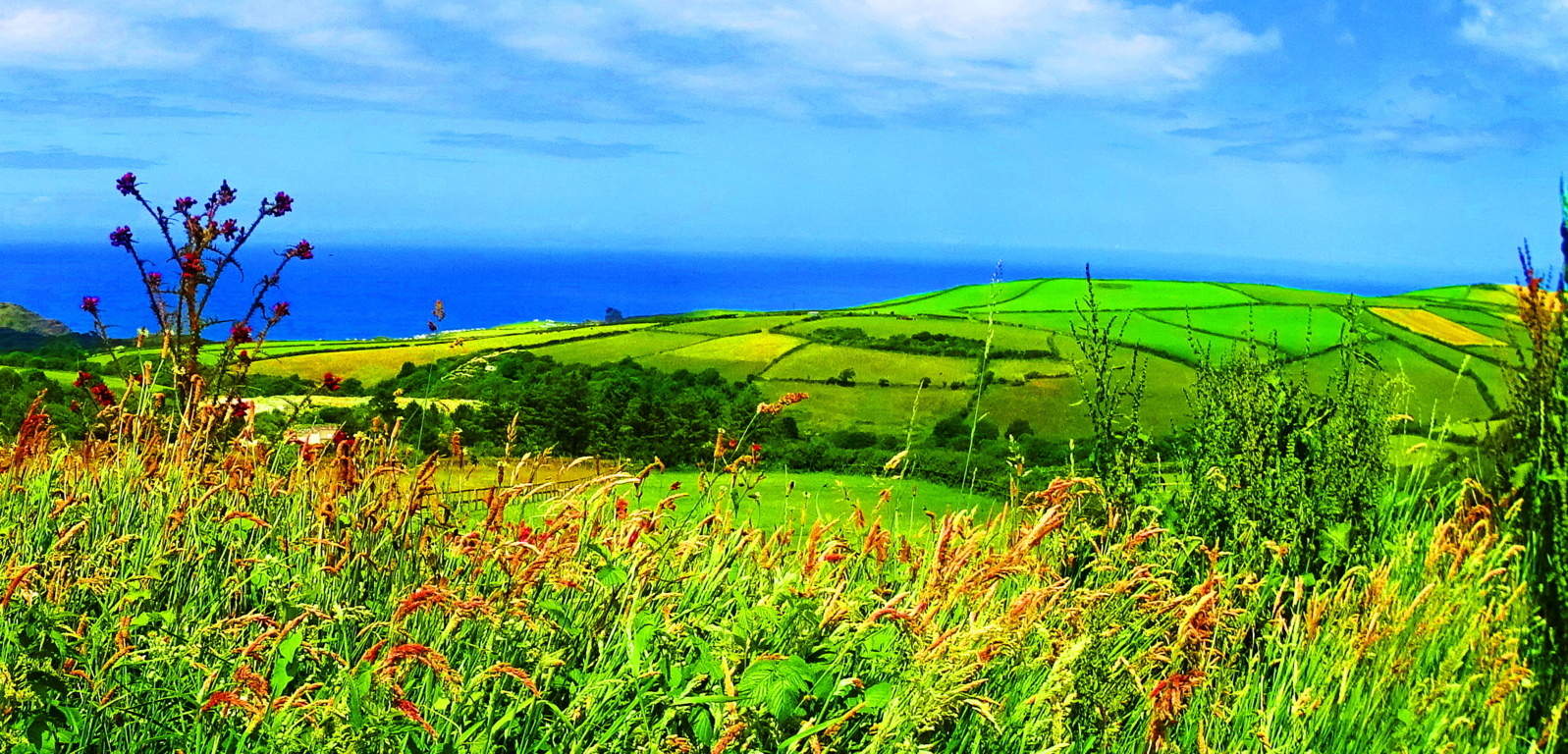 Tintagel is the epitome of the magical safe-haven travelers hope for, complete with an ancient Celtic castle built on a small but lofty island that looms along a 300 ft cliff reaching down to a sandy beach-bay, embraced by rocky cliffs, caves, and waterfalls. Seldom do hiking trails include so many major features in one place.
Tintagel is the epitome of the magical safe-haven travelers hope for, complete with an ancient Celtic castle built on a small but lofty island that looms along a 300 ft cliff reaching down to a sandy beach-bay, embraced by rocky cliffs, caves, and waterfalls. Seldom do hiking trails include so many major features in one place.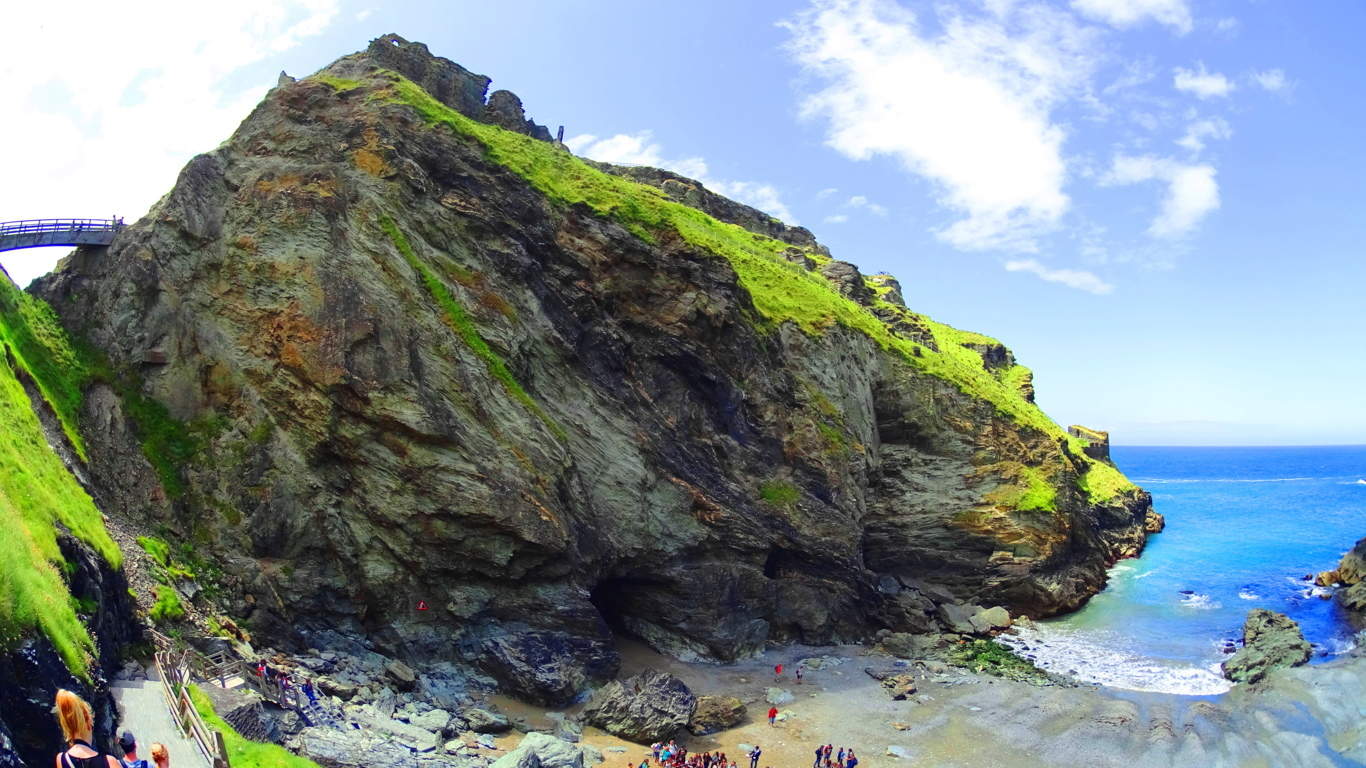 The trail for Tintagel Castle actually begins a mile before reaching the coastal scene, back in the center of the medieval town of Tintagel, which is now a beautiful bustling modern hamlet with every manor of comfort to offer. The trail literally begins from the main road in the center of town, extending down to a flowing freshwater stream with a path that leads straight to the Castle/Bay. Pass through a hilly cascade of tall grass and stony ledges that leads down to the coastal scene and gate.
The trail for Tintagel Castle actually begins a mile before reaching the coastal scene, back in the center of the medieval town of Tintagel, which is now a beautiful bustling modern hamlet with every manor of comfort to offer. The trail literally begins from the main road in the center of town, extending down to a flowing freshwater stream with a path that leads straight to the Castle/Bay. Pass through a hilly cascade of tall grass and stony ledges that leads down to the coastal scene and gate. There is a small fee to pass the modern gate, where you are then free to make a choice of walking the elevated wood-board trail that leads over a high bridge onto the island, on which the ruins of Tintagel Castle sits, or down a winding sandy loop to the beautiful beach, megaliths, and massive rock caverns. A portion of the main gate of the castle still stands today. This is is the original Celtic entrance-way to the paths leading to the inner grounds, and around the Island.
There is a small fee to pass the modern gate, where you are then free to make a choice of walking the elevated wood-board trail that leads over a high bridge onto the island, on which the ruins of Tintagel Castle sits, or down a winding sandy loop to the beautiful beach, megaliths, and massive rock caverns. A portion of the main gate of the castle still stands today. This is is the original Celtic entrance-way to the paths leading to the inner grounds, and around the Island.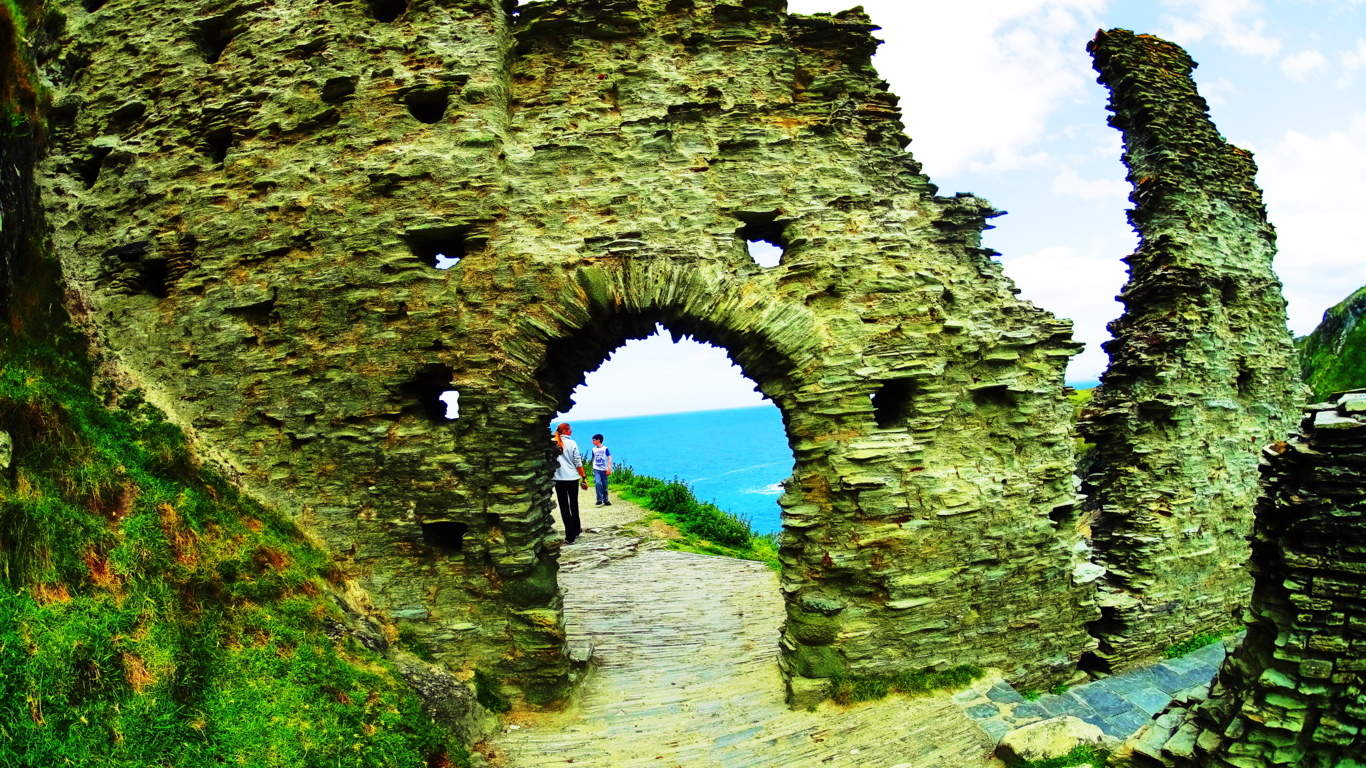 This rare archaeological site contains priceless remains of a Celtic Castle, one of the earliest Christian monastery’s in history, and Medieval period stonework. Almost every Celtic myth has origins here, including perhaps the most epic of all, The Arthur Legend. The story goes that Sir Gorlois, the Duke of ancient Cornwall, locked his wife Igrain in Tintagel while away battling for the Kingship of all England. Sir Uther Pendragon then disguised himself to look like the Duke by the magic of the legendary Druid Merlin, who lived below in the caves. Uther crossed the deep chasm of the bay on a magical mist created by Merlin. and entered the castle to conceive a child with Igrain. The child born of this intense mystical situation would be the legendary King Arthur. The myth of Sir Gawain and The Green Knight also began here. It is from this castle that Gawain sets off to find the ethereal crystal castle of the Green Knight, somewhere to the north, perhaps in Wales.
This rare archaeological site contains priceless remains of a Celtic Castle, one of the earliest Christian monastery’s in history, and Medieval period stonework. Almost every Celtic myth has origins here, including perhaps the most epic of all, The Arthur Legend. The story goes that Sir Gorlois, the Duke of ancient Cornwall, locked his wife Igrain in Tintagel while away battling for the Kingship of all England. Sir Uther Pendragon then disguised himself to look like the Duke by the magic of the legendary Druid Merlin, who lived below in the caves. Uther crossed the deep chasm of the bay on a magical mist created by Merlin. and entered the castle to conceive a child with Igrain. The child born of this intense mystical situation would be the legendary King Arthur. The myth of Sir Gawain and The Green Knight also began here. It is from this castle that Gawain sets off to find the ethereal crystal castle of the Green Knight, somewhere to the north, perhaps in Wales.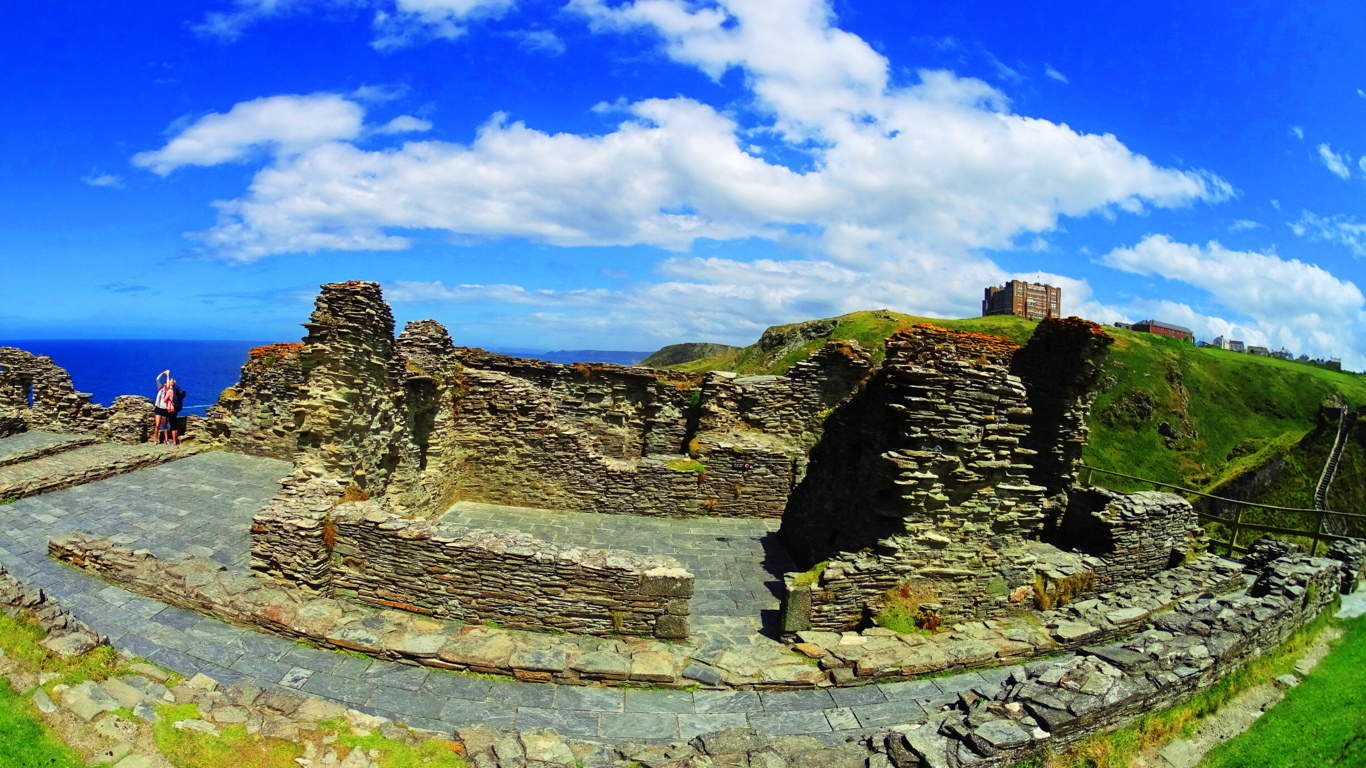 In recent years archaeologists unearthed a piece of Cornish slate with a version of the name ‘Arthur’ written on it, as well as items from France, Spain, and Ireland, indicating that this was an extremely busy and successful international seaport. These upper paths run for about a mile-and-a-half around the south-east edge of the island, with wild goats grazing, and gorgeous views of the blue-green Irish Sea.
In recent years archaeologists unearthed a piece of Cornish slate with a version of the name ‘Arthur’ written on it, as well as items from France, Spain, and Ireland, indicating that this was an extremely busy and successful international seaport. These upper paths run for about a mile-and-a-half around the south-east edge of the island, with wild goats grazing, and gorgeous views of the blue-green Irish Sea.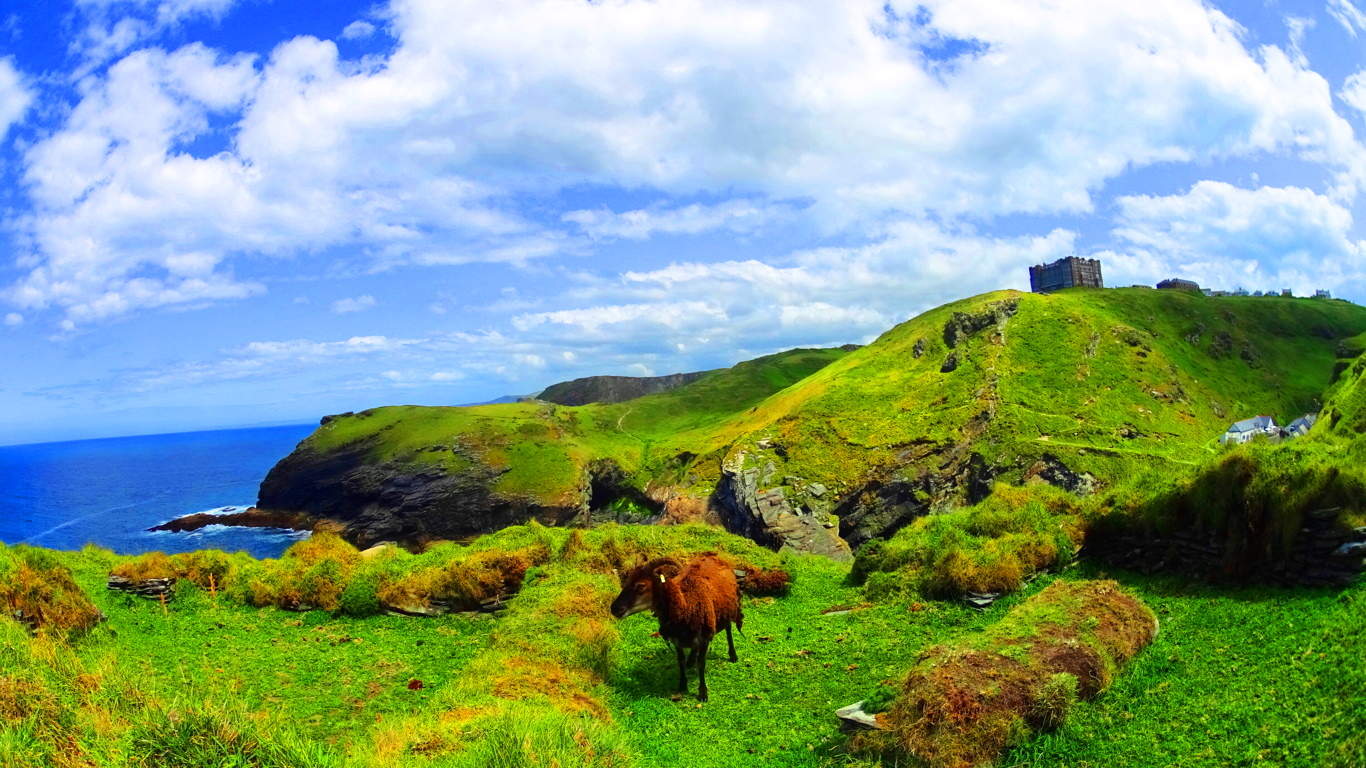 Once you’ve made your way around the Castle island, work your way down one of the most picturesque bays in England. With the Castle ruins looming over the entire scene, it is easy to see why the ancients chose this place to live.
Once you’ve made your way around the Castle island, work your way down one of the most picturesque bays in England. With the Castle ruins looming over the entire scene, it is easy to see why the ancients chose this place to live.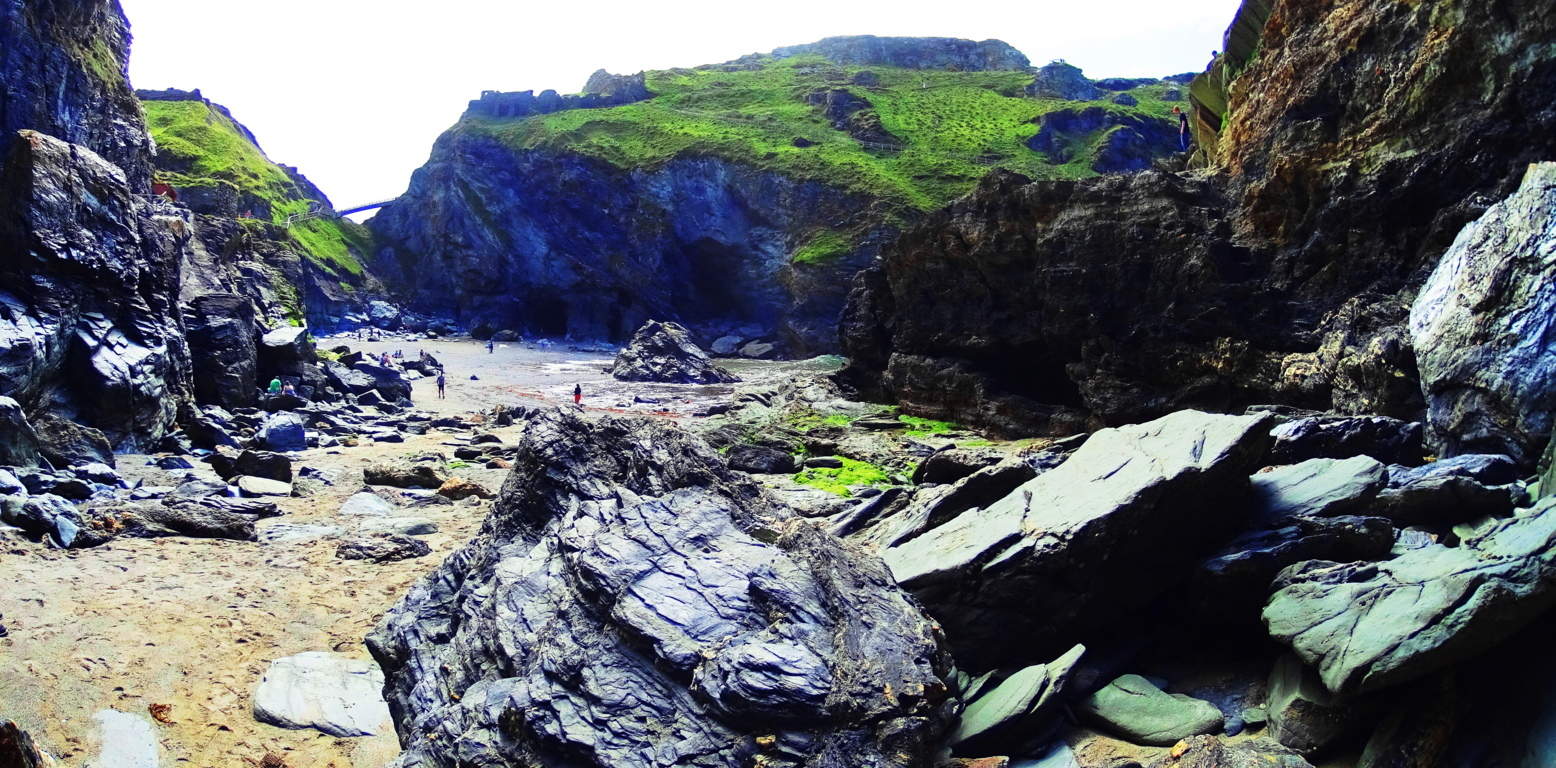 Freshwater streams roll down to the beach. Massive free-sitting boulders guard the cave entrances, along with mysterious standing-stones interlocked along the beach and rocks (top images). This interlocking style is very similar to the standing stones at the sacred alter in Heath Massachusetts, across the Atlantic. The boulders are sitting above other rock faces (pictured below), and centrally to the entire scene, as if they were placed. This is, again, very similar to boulders at other megalithic sites. These are specifically placed stones that date back to pre-Celtic times, associated with giants, when England was known as Albion, meaning, “Land of Giants.”
Freshwater streams roll down to the beach. Massive free-sitting boulders guard the cave entrances, along with mysterious standing-stones interlocked along the beach and rocks (top images). This interlocking style is very similar to the standing stones at the sacred alter in Heath Massachusetts, across the Atlantic. The boulders are sitting above other rock faces (pictured below), and centrally to the entire scene, as if they were placed. This is, again, very similar to boulders at other megalithic sites. These are specifically placed stones that date back to pre-Celtic times, associated with giants, when England was known as Albion, meaning, “Land of Giants.”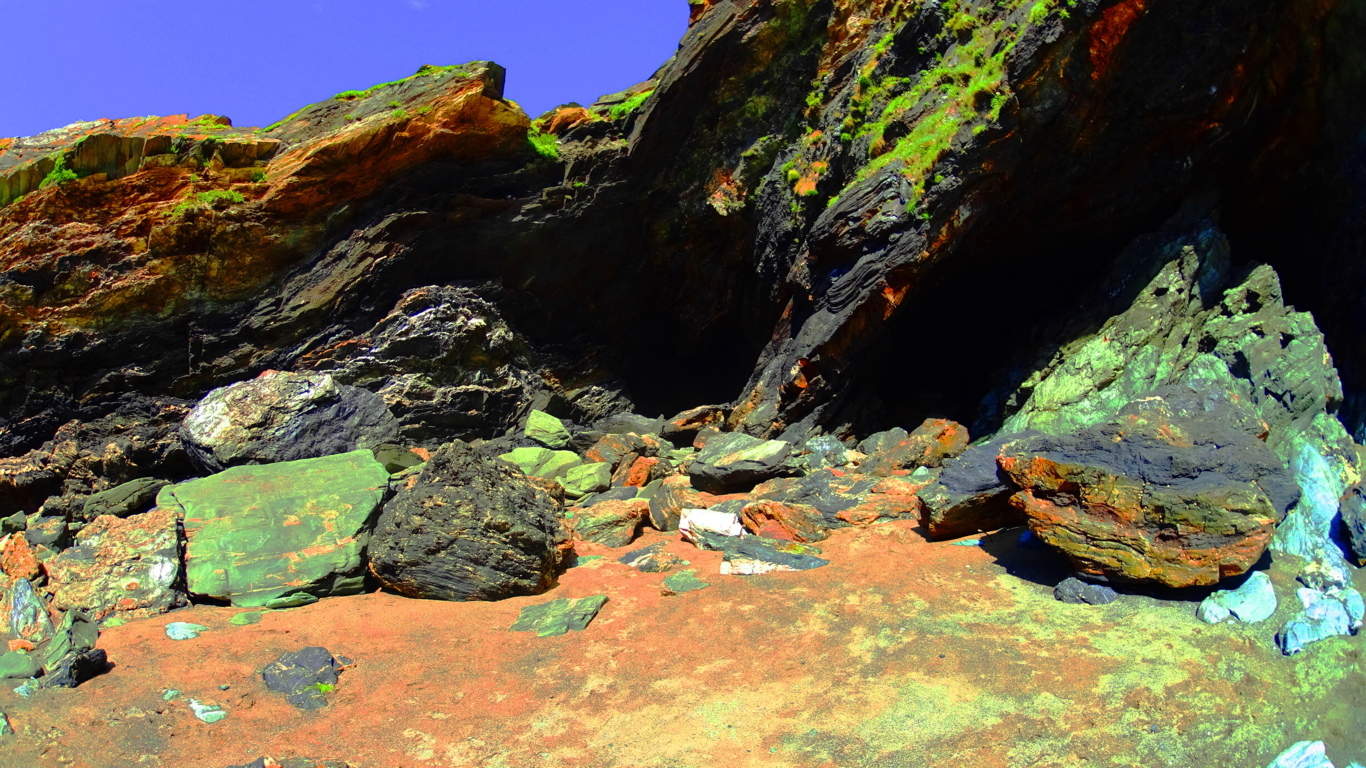 This beach is filled with white sand and mesmerizing tidal flow from the Celtic Sea, which paces everything like a hypnotic dream. You may very well find people reciting poetry about the birth of King Arthur on the beach, or getting some sun.
This beach is filled with white sand and mesmerizing tidal flow from the Celtic Sea, which paces everything like a hypnotic dream. You may very well find people reciting poetry about the birth of King Arthur on the beach, or getting some sun. 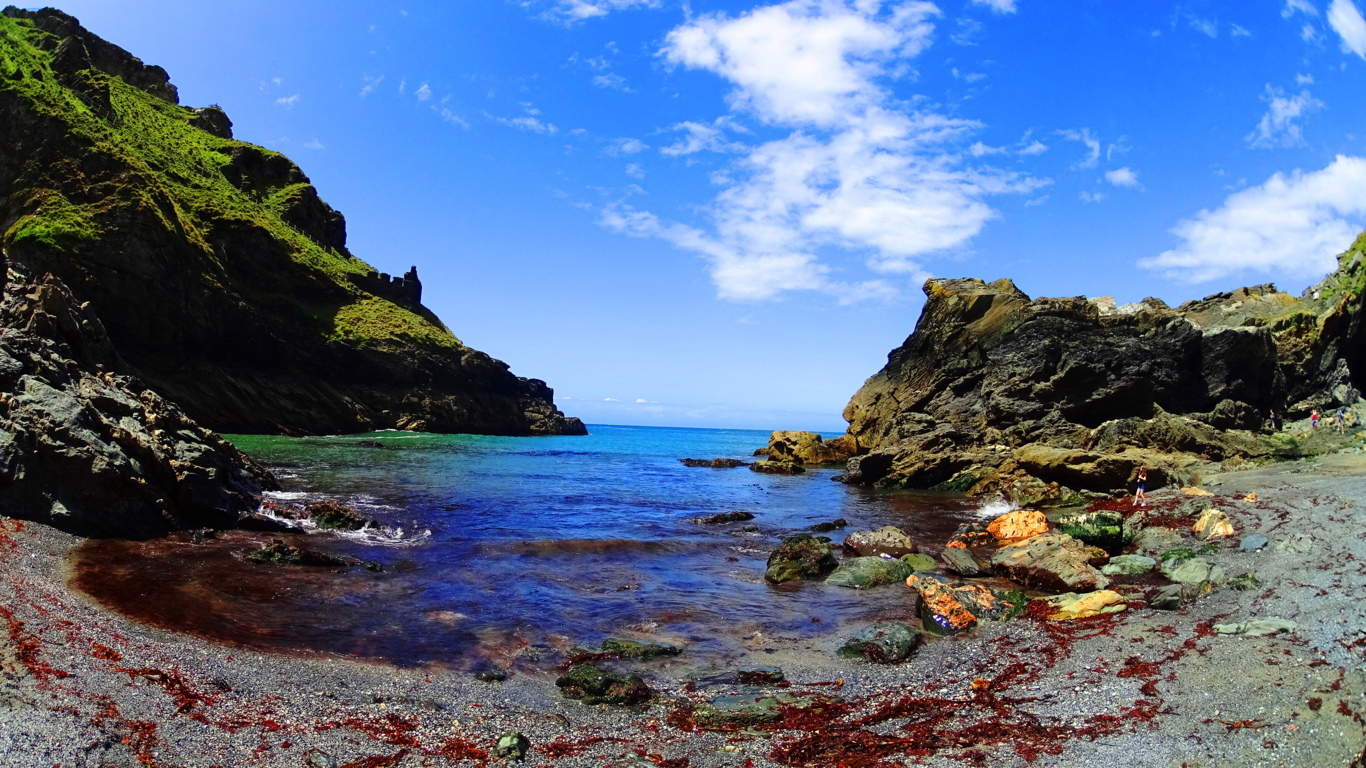 This is a place to take your time and revel in the history and scenery. The entire excursion is about 4.5 miles worth of hiking, after making your way back to town. The energy at Tintagel is palpable. Here you don’t just get an epic glimpse of how things once were in simpler times before the modern world had its way, you feel it.
This is a place to take your time and revel in the history and scenery. The entire excursion is about 4.5 miles worth of hiking, after making your way back to town. The energy at Tintagel is palpable. Here you don’t just get an epic glimpse of how things once were in simpler times before the modern world had its way, you feel it.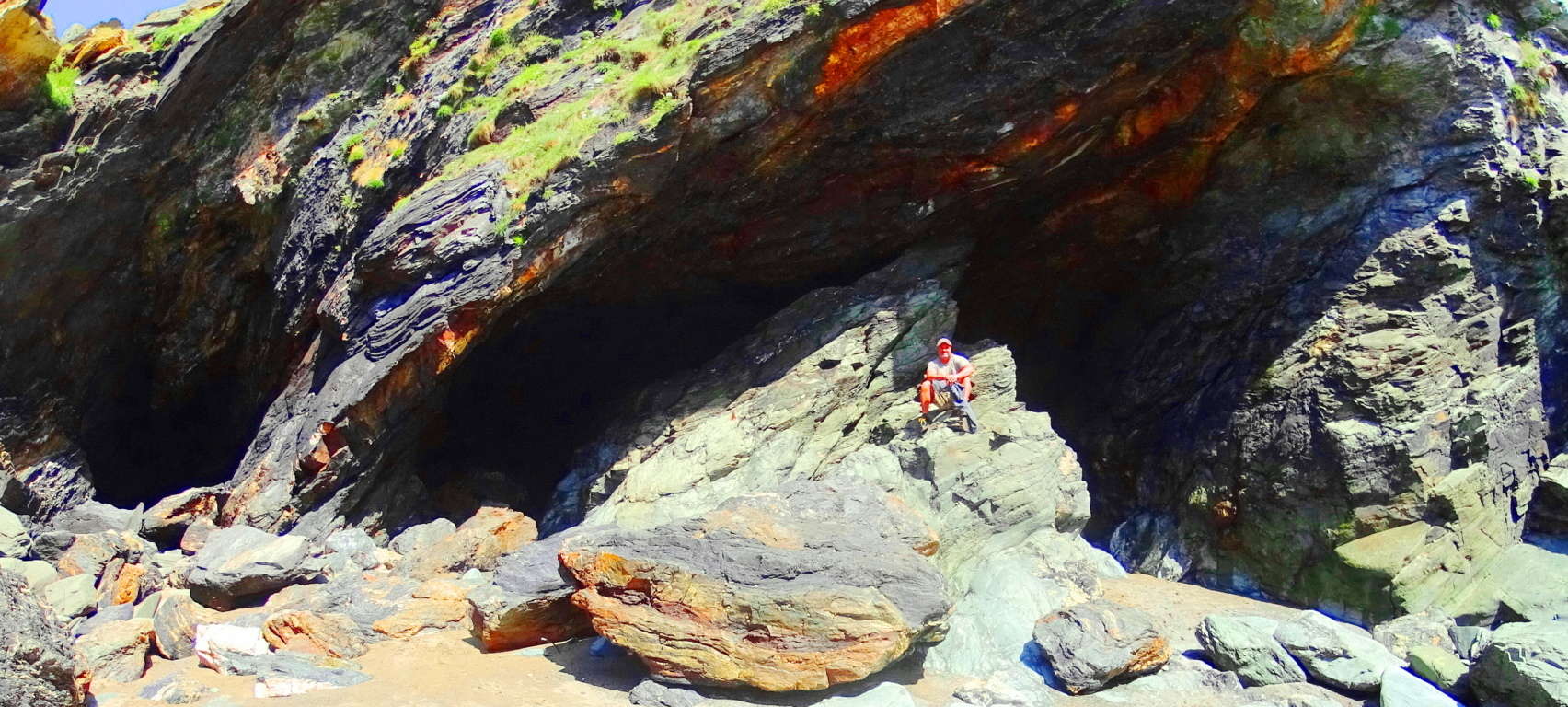
Stonehenge
Note: Imagine yourself walking on a broad plateau surrounded by miles of grass and swaying brush. Continue to imagine that you are curious enough to seek out the best elevation among these vast fields, following the slight incline, continually heading upward. You begin to see something distinct just above the landscape, off in the distance. At about 400 feet away you glimpse something entirely impossible. There before you are several circular stone enclosures towering above you. The hallowed presentation of the area is hard to comprehend, even in broad daylight. It is not a disheveled scene, but rather, a highly organized, dynamic and symmetric presentation, like a temple. You then realize, all at once, that you may be looking at the first temple on earth. If you don’t turn away in fear, your mind, whether it is that of a passing farmer, saint, knight, Celtic king, or simple serf of times past, will inevitably reach for that first logical question asked for thousands of years before: how? How did this happen? Let’s fast forward and look at some of the modern observations. The external ring is made up of Sarsen stone, each standing 30 feet high, at 25 tons each.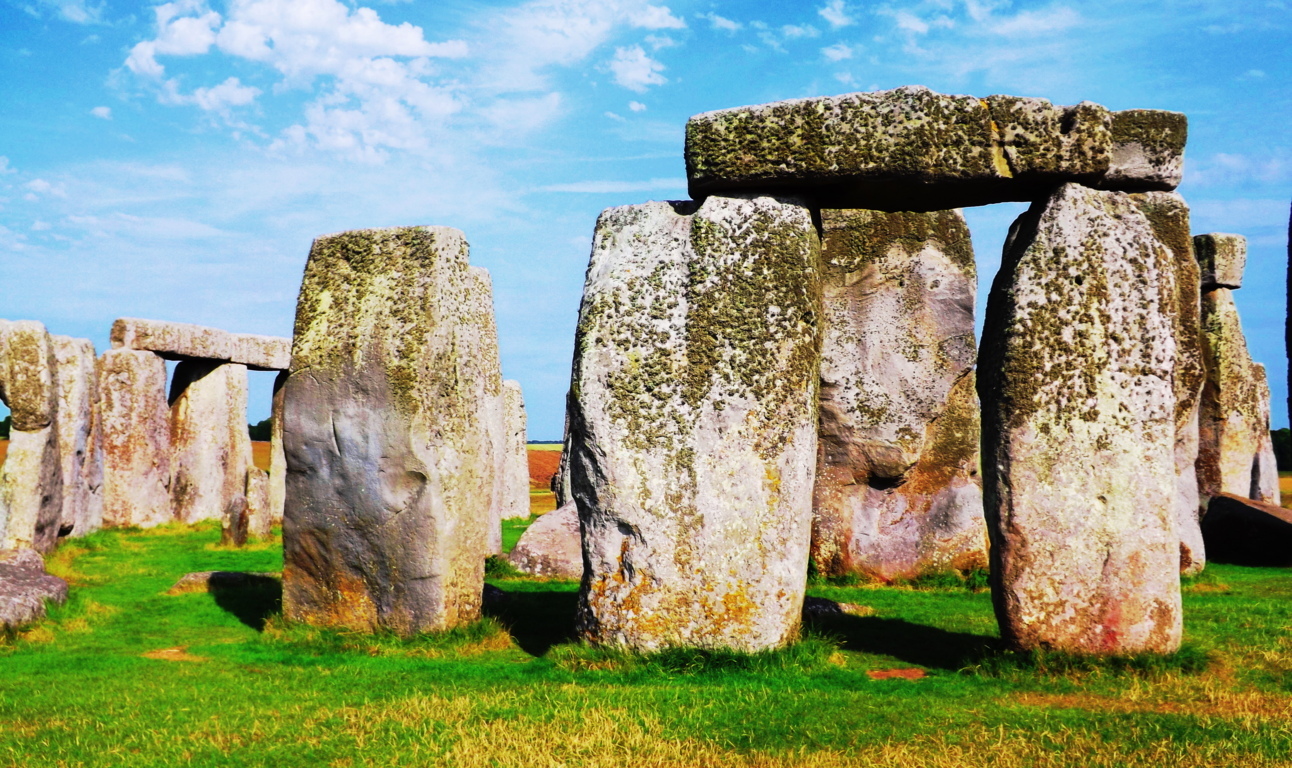 This exterior ring looks to be incomplete, as only 16 of the original Sarsen stones are in place, while there is a significant gap on the opposite end. Was the ring ever fully completed? If it was finished, how could some stones then disappear? A secondary ring of 43 Blue Stones are distinct but also obviously incomplete, within the larger Sarsens. Some believe that there were as many as 80 Blue Stones originally. They weigh roughly 2 to 4 tons each, and were believed to be inserted thousands of years after the Sarsens. A third set of Lintel Stones are laid across the top of the Sarsens in different areas, revealing the intended circularity of the enclosure. The Lintels are not free-sitting, but are placed into grand notches that are carved into the top of the Sarsens, revealing yet another miraculous feat of engineering, besides the placement of the stones themselves. Lastly, at the innermost section of the rings of stone, are the five domineering Trilithons, set in a “horshoe” style configuration, including the lintels above them, weighing 50 colossal tons each. I was lucky enough to walk the grounds of Stonehenge on a sunny day, and got the best images I could, shown here. It was just as moving to step away and see others sizing up the scene, perhaps realizing, as I did, their own humanity; Perceiving that these stones have been here long before they were born, and will be there long after they are gone.
This exterior ring looks to be incomplete, as only 16 of the original Sarsen stones are in place, while there is a significant gap on the opposite end. Was the ring ever fully completed? If it was finished, how could some stones then disappear? A secondary ring of 43 Blue Stones are distinct but also obviously incomplete, within the larger Sarsens. Some believe that there were as many as 80 Blue Stones originally. They weigh roughly 2 to 4 tons each, and were believed to be inserted thousands of years after the Sarsens. A third set of Lintel Stones are laid across the top of the Sarsens in different areas, revealing the intended circularity of the enclosure. The Lintels are not free-sitting, but are placed into grand notches that are carved into the top of the Sarsens, revealing yet another miraculous feat of engineering, besides the placement of the stones themselves. Lastly, at the innermost section of the rings of stone, are the five domineering Trilithons, set in a “horshoe” style configuration, including the lintels above them, weighing 50 colossal tons each. I was lucky enough to walk the grounds of Stonehenge on a sunny day, and got the best images I could, shown here. It was just as moving to step away and see others sizing up the scene, perhaps realizing, as I did, their own humanity; Perceiving that these stones have been here long before they were born, and will be there long after they are gone.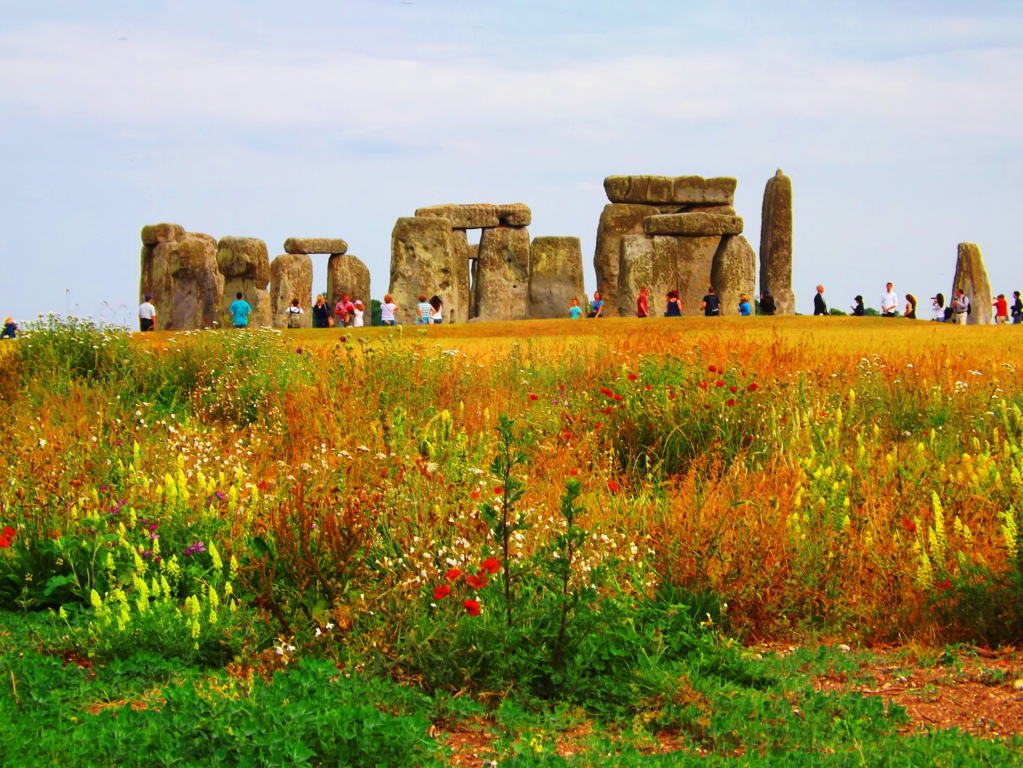 Research continues regarding the meaning of this mystical place. Recent discoveries have revealed that Stonehenge is part of a grander overall context of ‘spiritual monuments’ once built into the land. Remnants of what is now being called “Woodhenge” has been found a few miles away, built in similar fashion to Stonehenge, near to the river Avon. Compelling theories about the ancient Britons utilizing Woodhenge as a temple to the living (cultural association with wood), which moves up along the River Avon in a procession towards Stonehenge (stone being culturally associated with the dead) in a ceremonial celebration of existence, have been put forward. Many researchers also believe Stonehenge was built as a type of ‘celestial clock’, marking the Summer and Winter Solstices for eternity. Another feature of the area is a beautiful ten foot high Standing Stone perched roughly 70 yards away from the Sarson circle. This stone, with its nodules and indented creases, looks somehow older than the Sarsons in the distance. It clearly looks as if it were standing guard over the area, warning passers by that the area is flat-out sacred, and to act accordingly.
Research continues regarding the meaning of this mystical place. Recent discoveries have revealed that Stonehenge is part of a grander overall context of ‘spiritual monuments’ once built into the land. Remnants of what is now being called “Woodhenge” has been found a few miles away, built in similar fashion to Stonehenge, near to the river Avon. Compelling theories about the ancient Britons utilizing Woodhenge as a temple to the living (cultural association with wood), which moves up along the River Avon in a procession towards Stonehenge (stone being culturally associated with the dead) in a ceremonial celebration of existence, have been put forward. Many researchers also believe Stonehenge was built as a type of ‘celestial clock’, marking the Summer and Winter Solstices for eternity. Another feature of the area is a beautiful ten foot high Standing Stone perched roughly 70 yards away from the Sarson circle. This stone, with its nodules and indented creases, looks somehow older than the Sarsons in the distance. It clearly looks as if it were standing guard over the area, warning passers by that the area is flat-out sacred, and to act accordingly.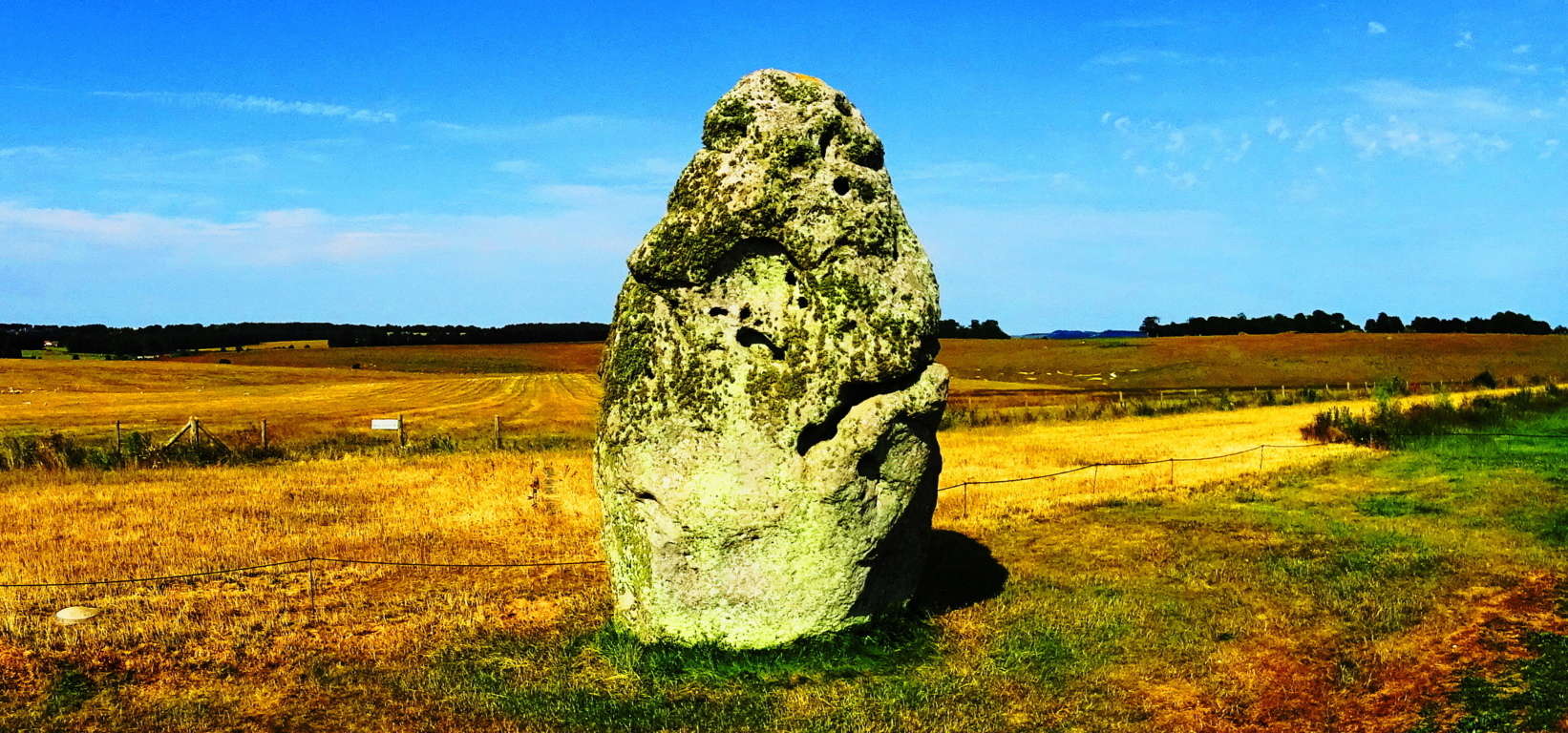 These “guardian stones” can be found near Dolmens and Wedge Tombs all across the Celtic world, standing at the periphery of sacred areas as warnings that visitors are entering a sacred space. This phenomenon exists also in New England, but in the form of free-sitting boulders. Boulders will be placed peripherally, strategically, to corner off a section of forest, cliff, or mountain plateau, in order to make passers-by aware that the area they enter contains sacred features. All of this could have originated at Stonehenge. The original myths and stories of the English country-folk say that giants are the builders of Stonehenge. Ceremonies of Celtic Kings and tribal leaders have taken place within this sacred circle for as long as recorded time has existed, including fantastic tales of Merlin and King Arthur intertwined with the history. Today it is an internationally protected historical site, with a museum and bus that runs along the hills up to the site for a ticket price. You also have the option to walk if you so choose. Stonehenge is the epitome and origin of everything magical about megaliths, once you see it, you cannot help but realize that so many wonderful things are still left to be understood. If you can, I hope you will give yourself that chance.
These “guardian stones” can be found near Dolmens and Wedge Tombs all across the Celtic world, standing at the periphery of sacred areas as warnings that visitors are entering a sacred space. This phenomenon exists also in New England, but in the form of free-sitting boulders. Boulders will be placed peripherally, strategically, to corner off a section of forest, cliff, or mountain plateau, in order to make passers-by aware that the area they enter contains sacred features. All of this could have originated at Stonehenge. The original myths and stories of the English country-folk say that giants are the builders of Stonehenge. Ceremonies of Celtic Kings and tribal leaders have taken place within this sacred circle for as long as recorded time has existed, including fantastic tales of Merlin and King Arthur intertwined with the history. Today it is an internationally protected historical site, with a museum and bus that runs along the hills up to the site for a ticket price. You also have the option to walk if you so choose. Stonehenge is the epitome and origin of everything magical about megaliths, once you see it, you cannot help but realize that so many wonderful things are still left to be understood. If you can, I hope you will give yourself that chance.
